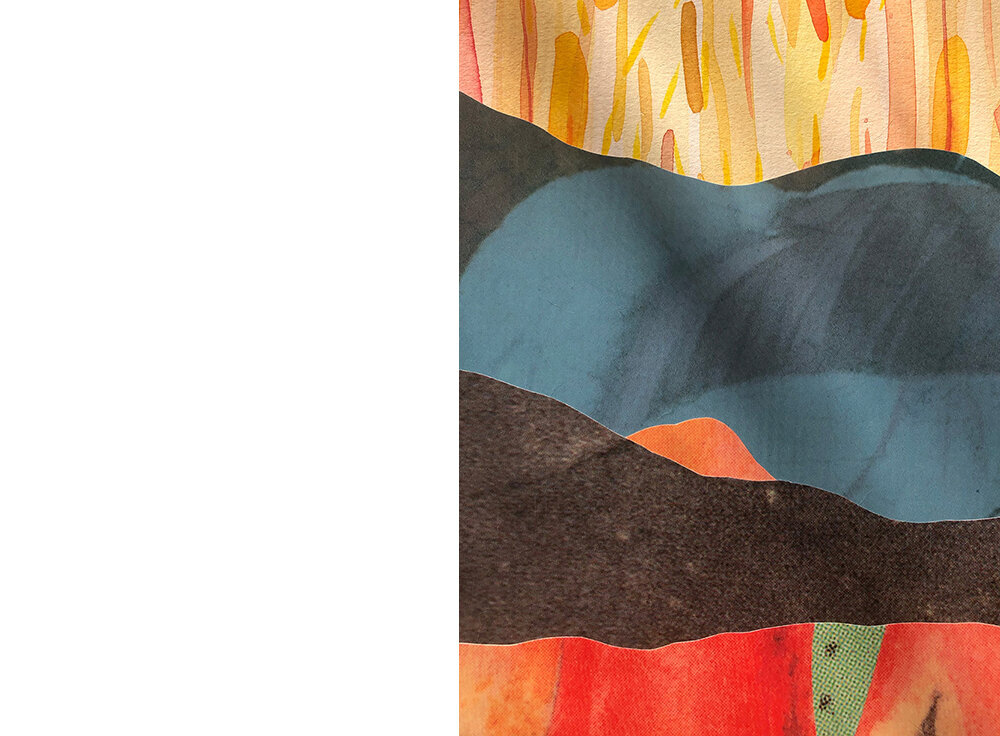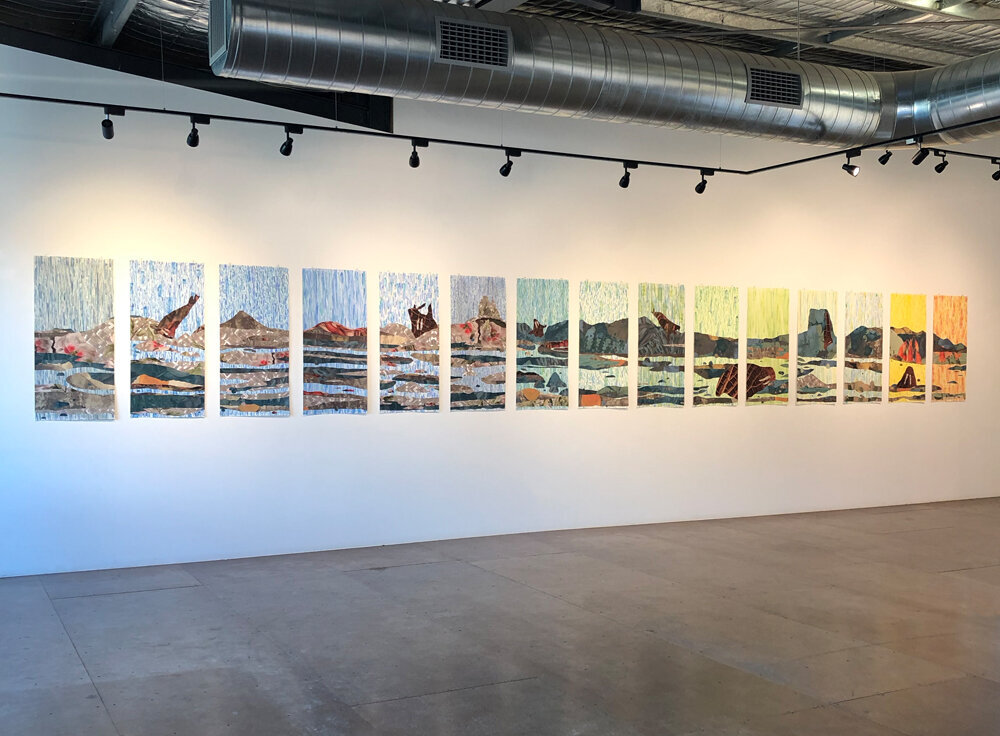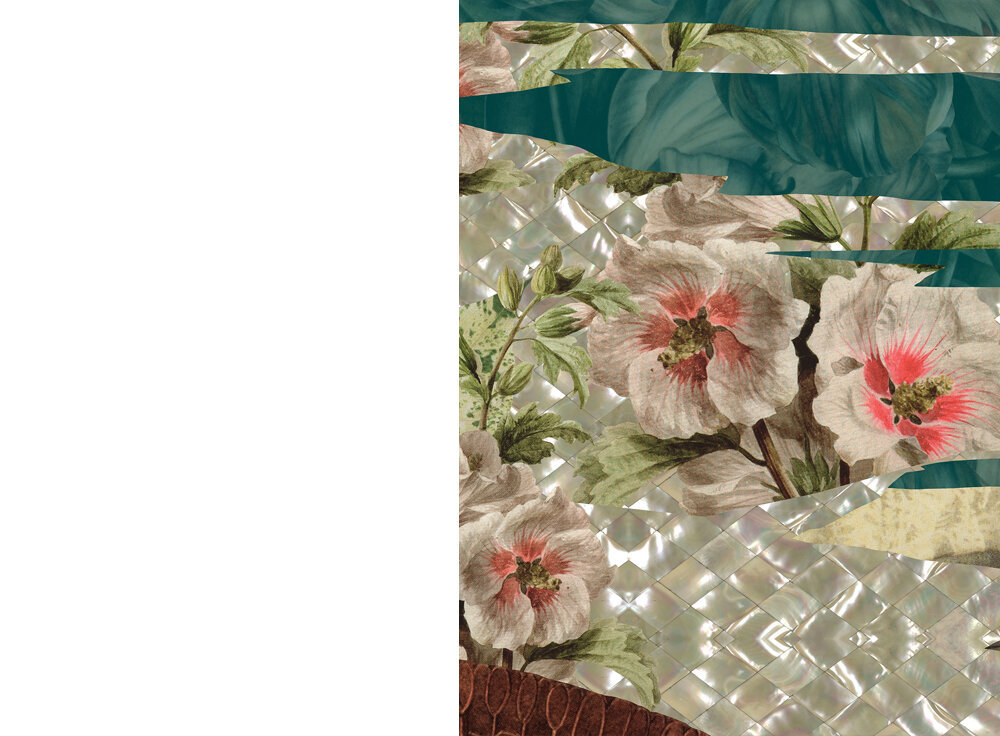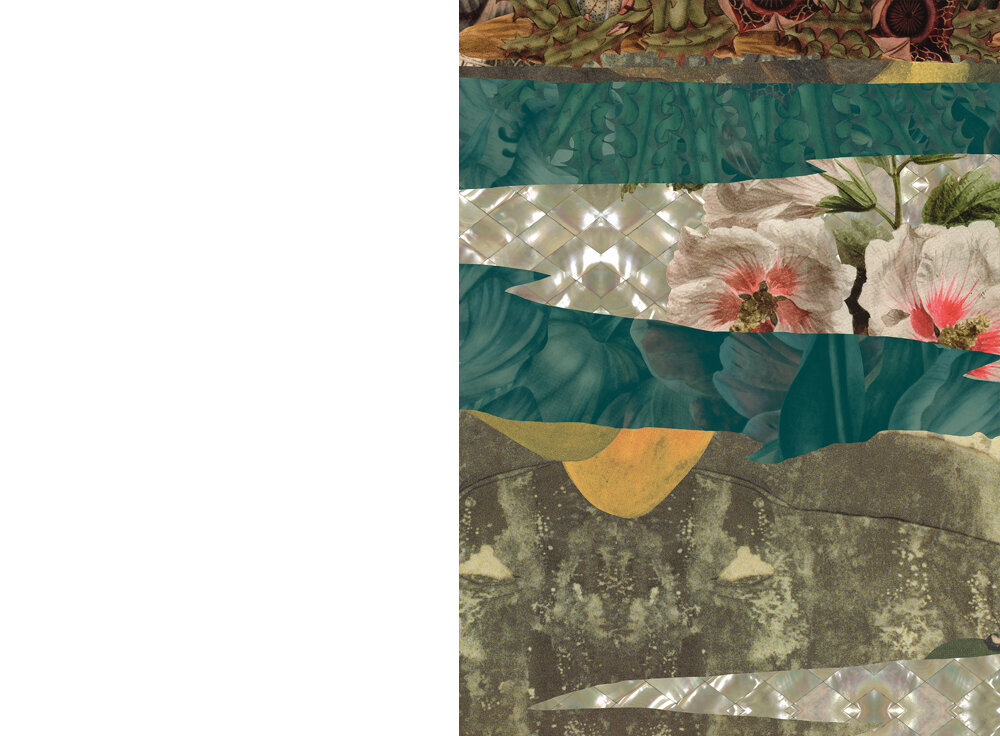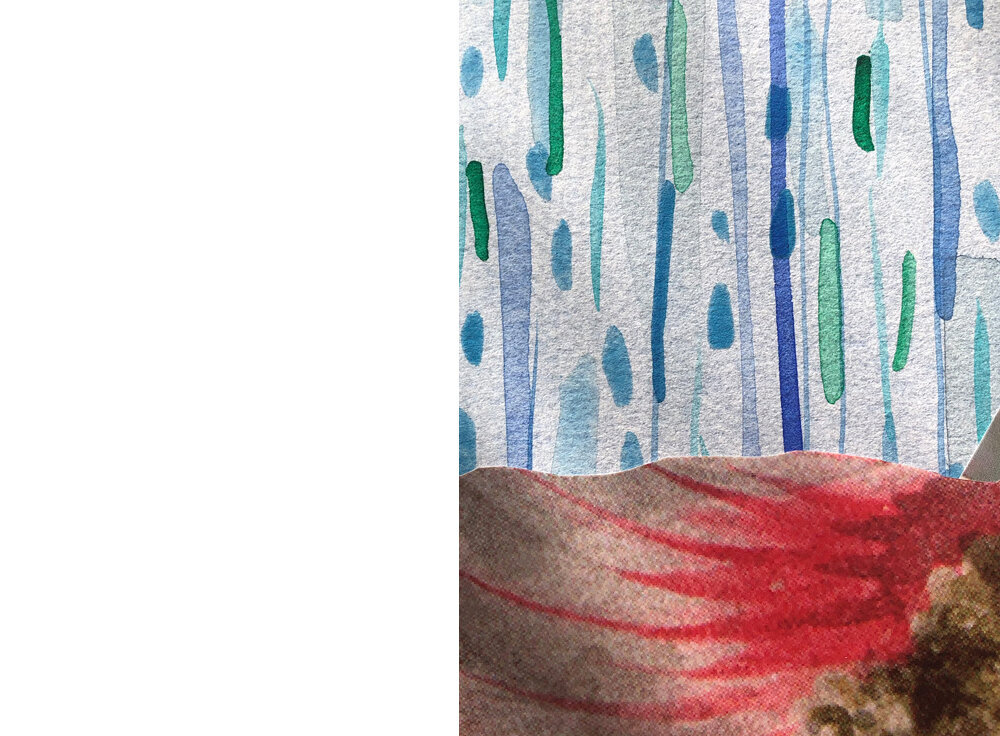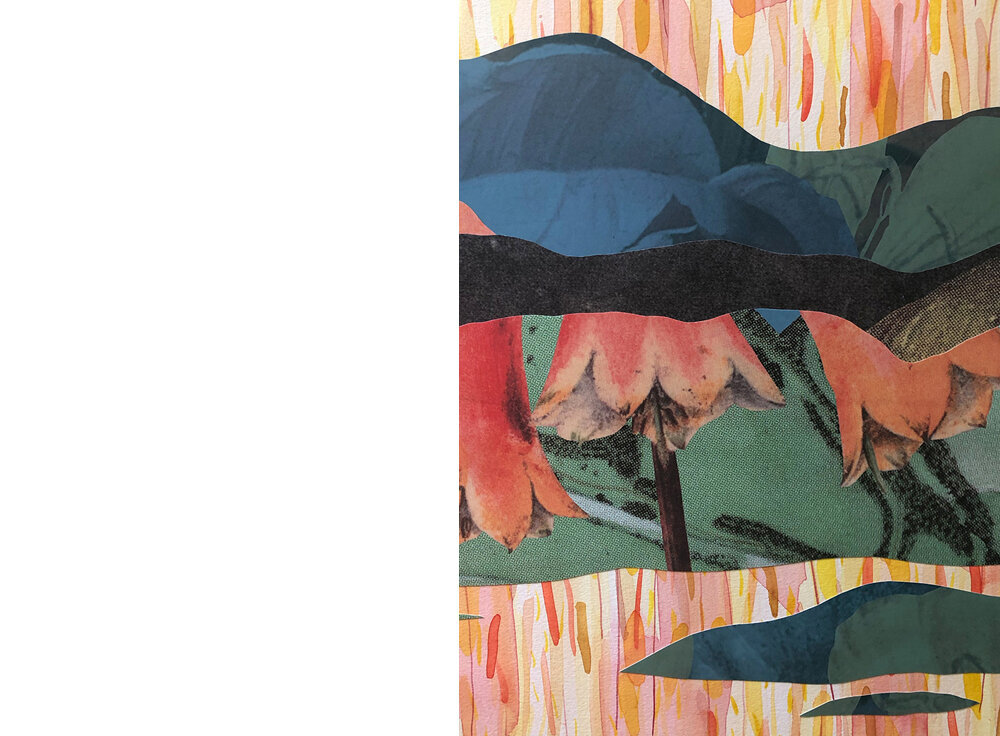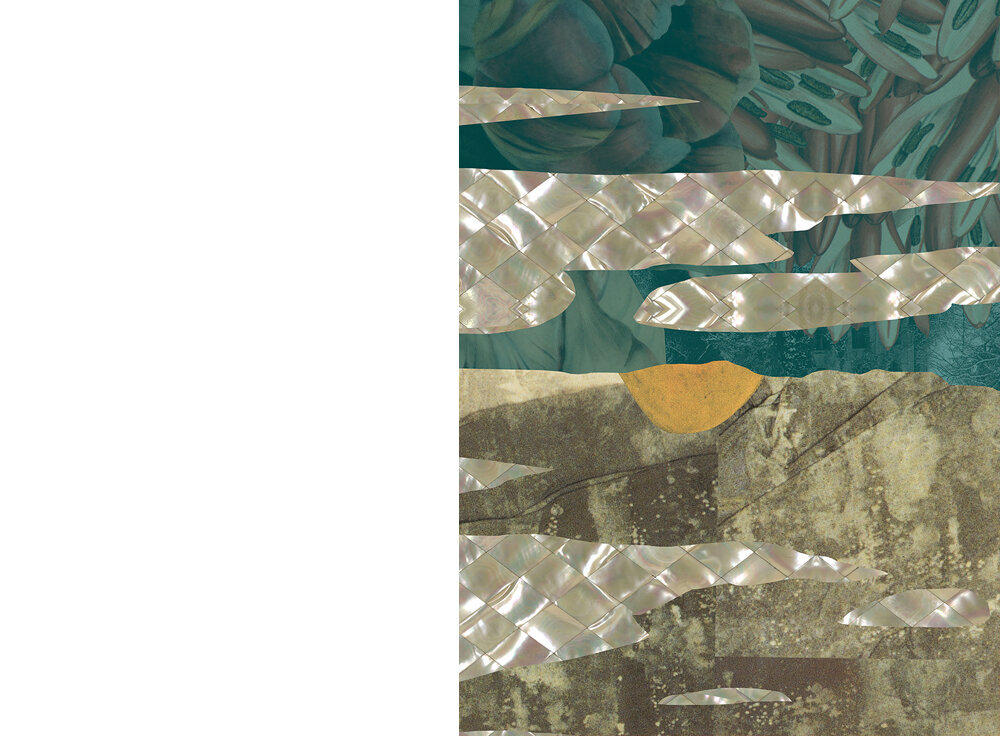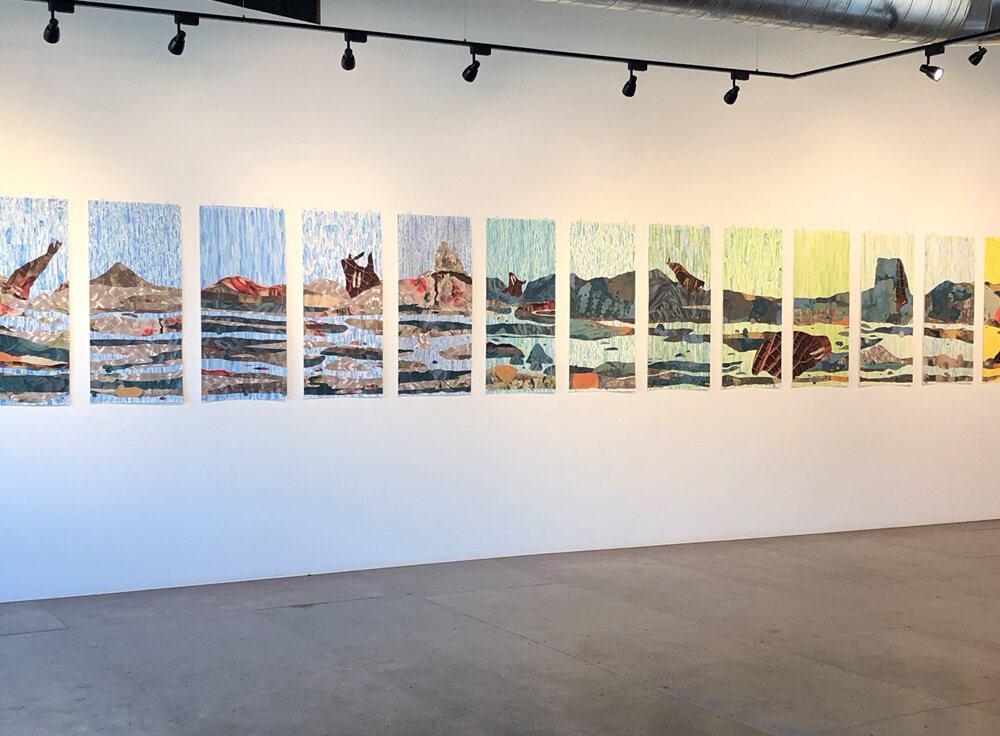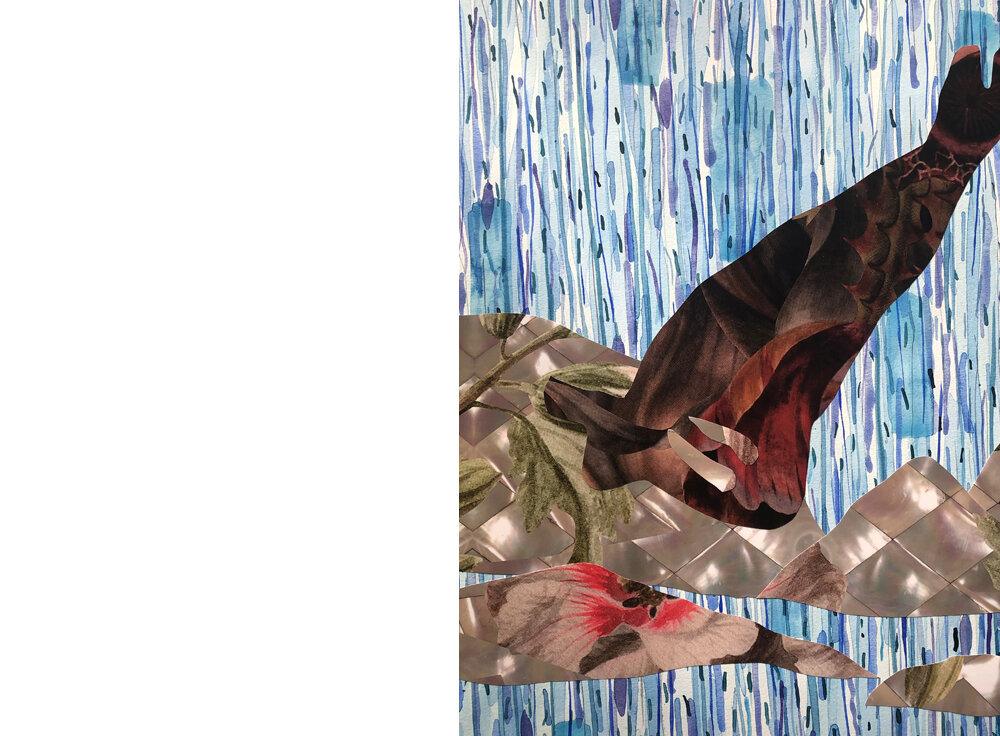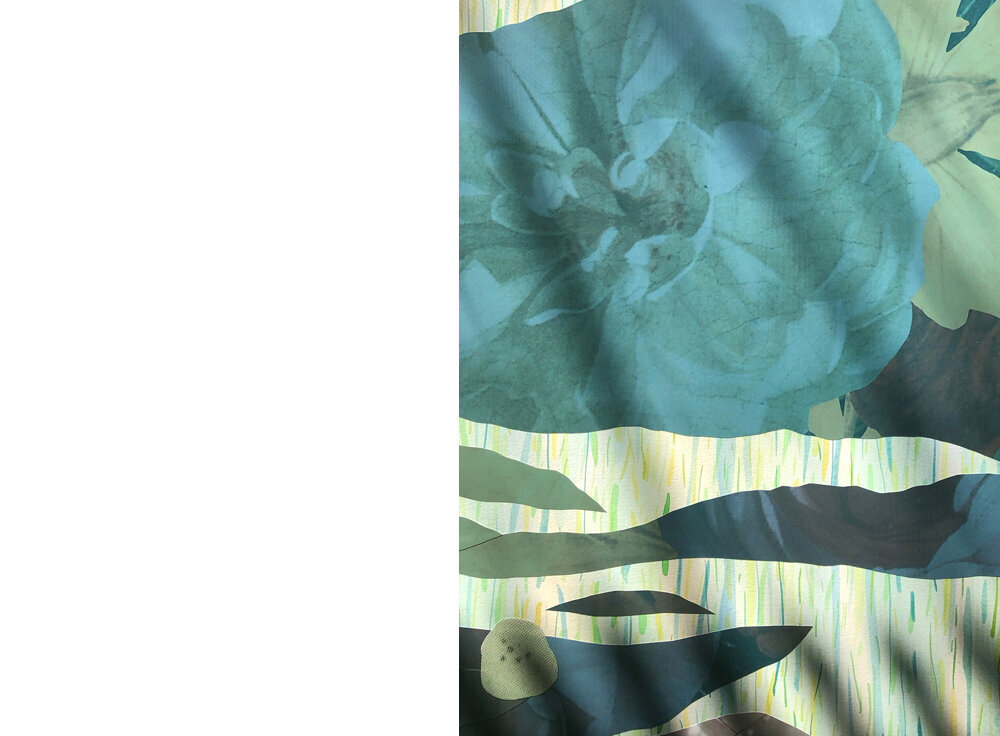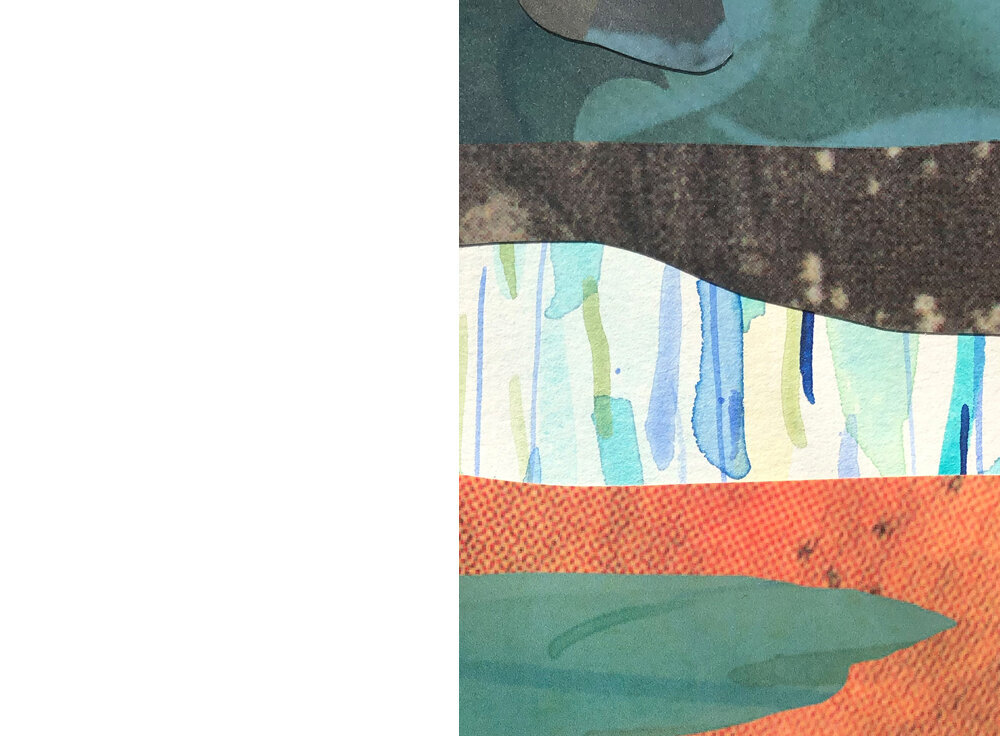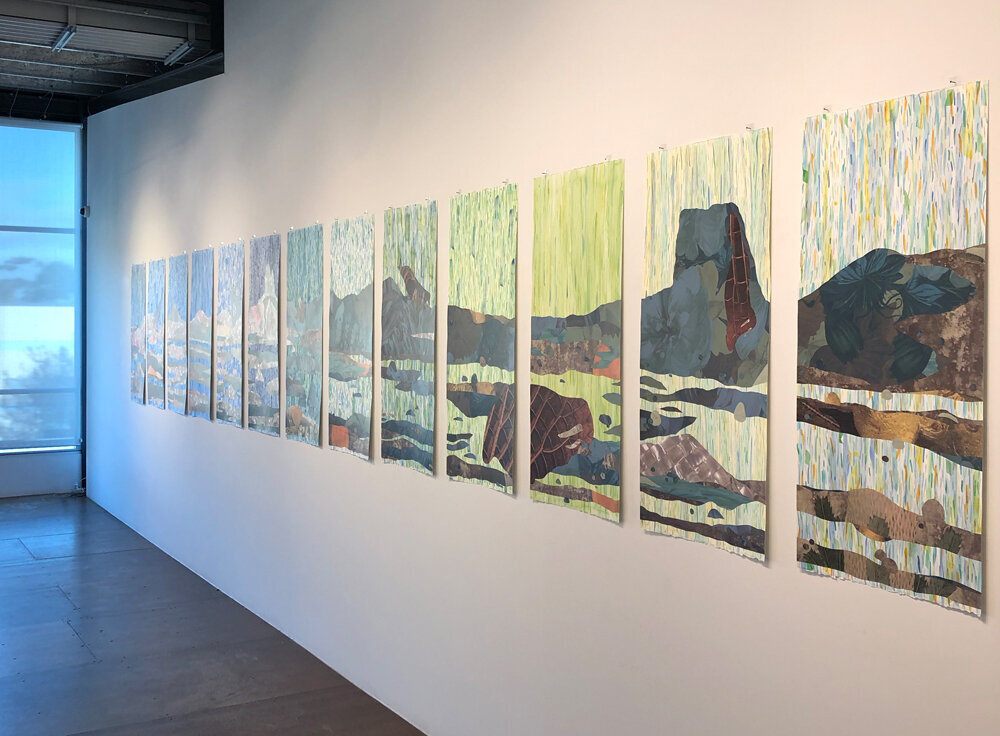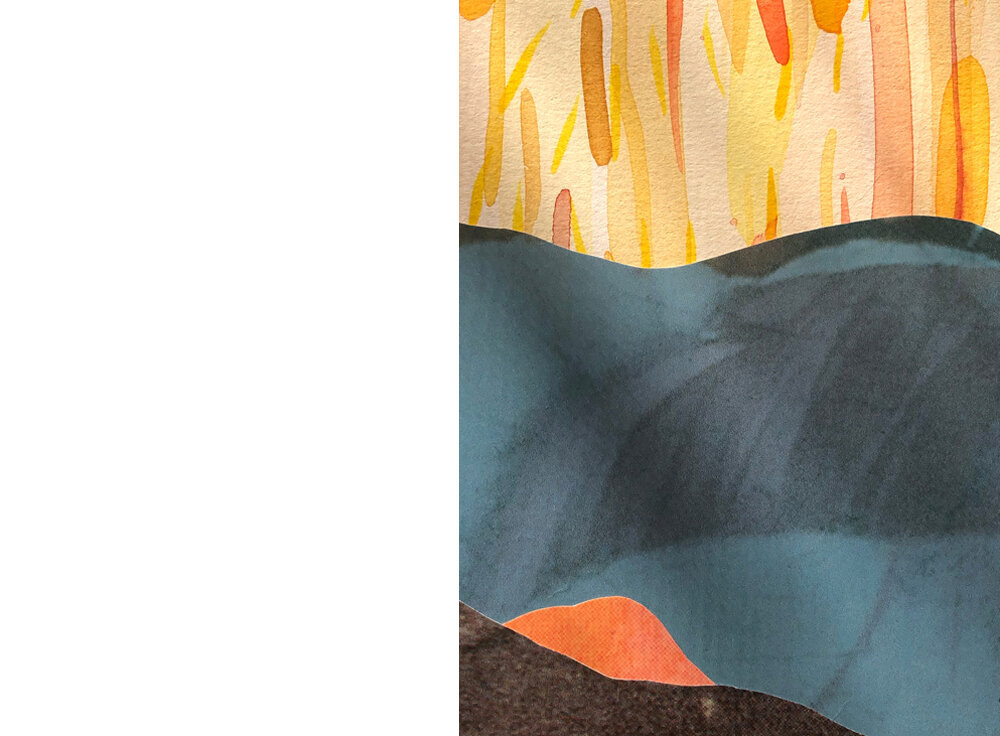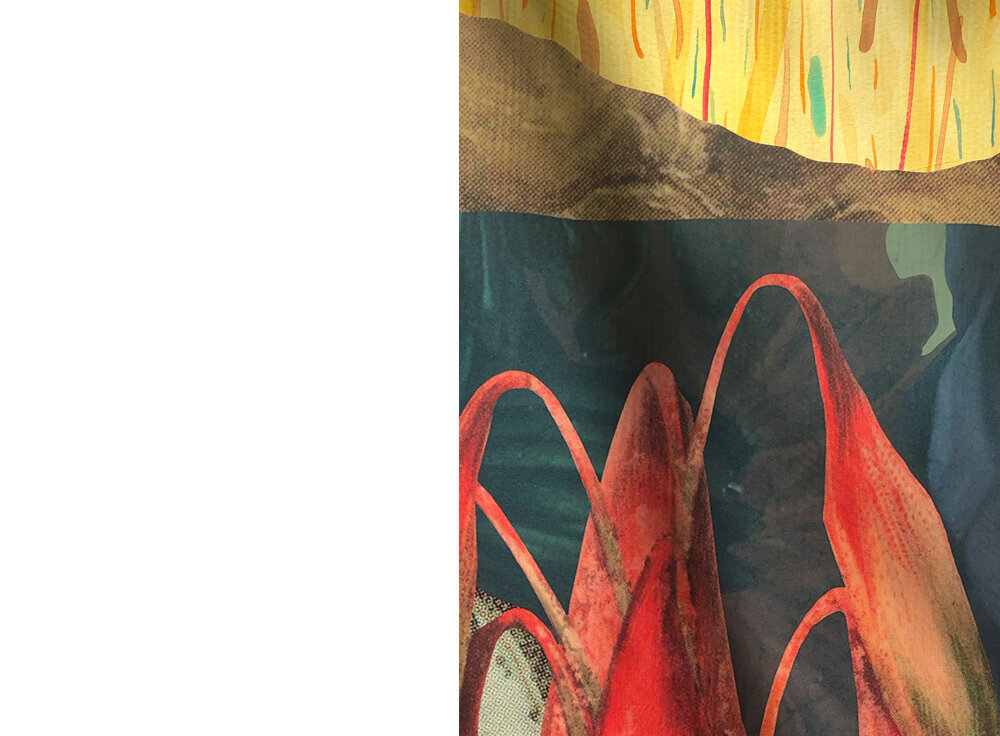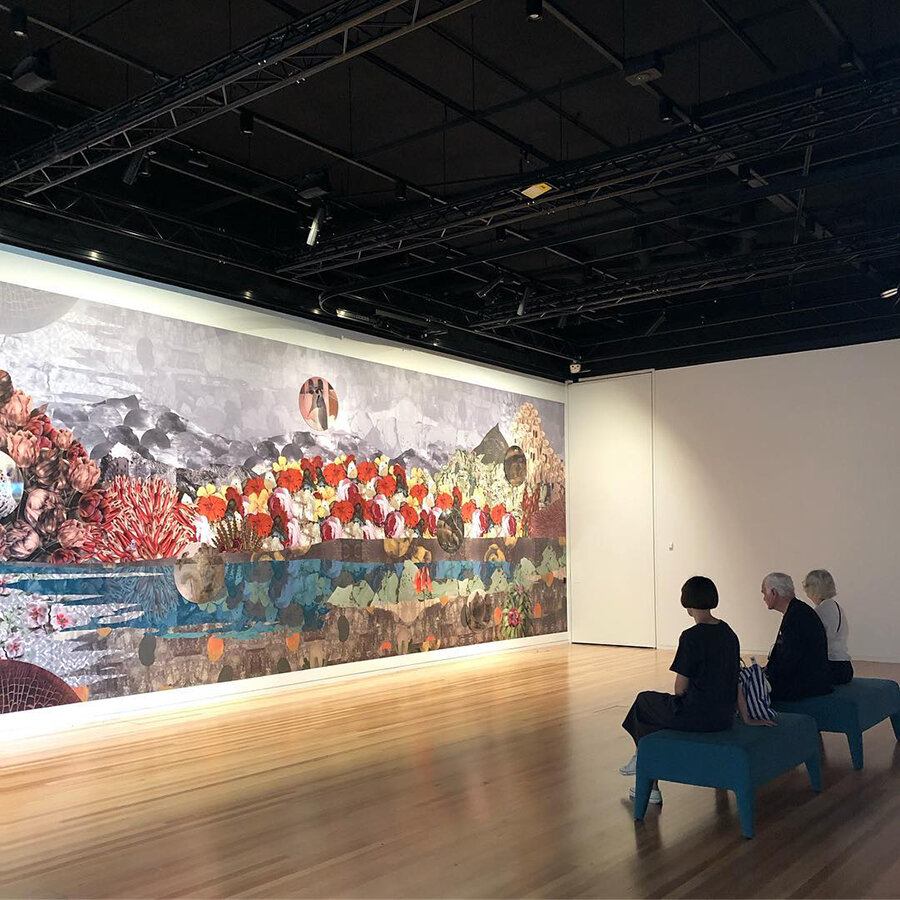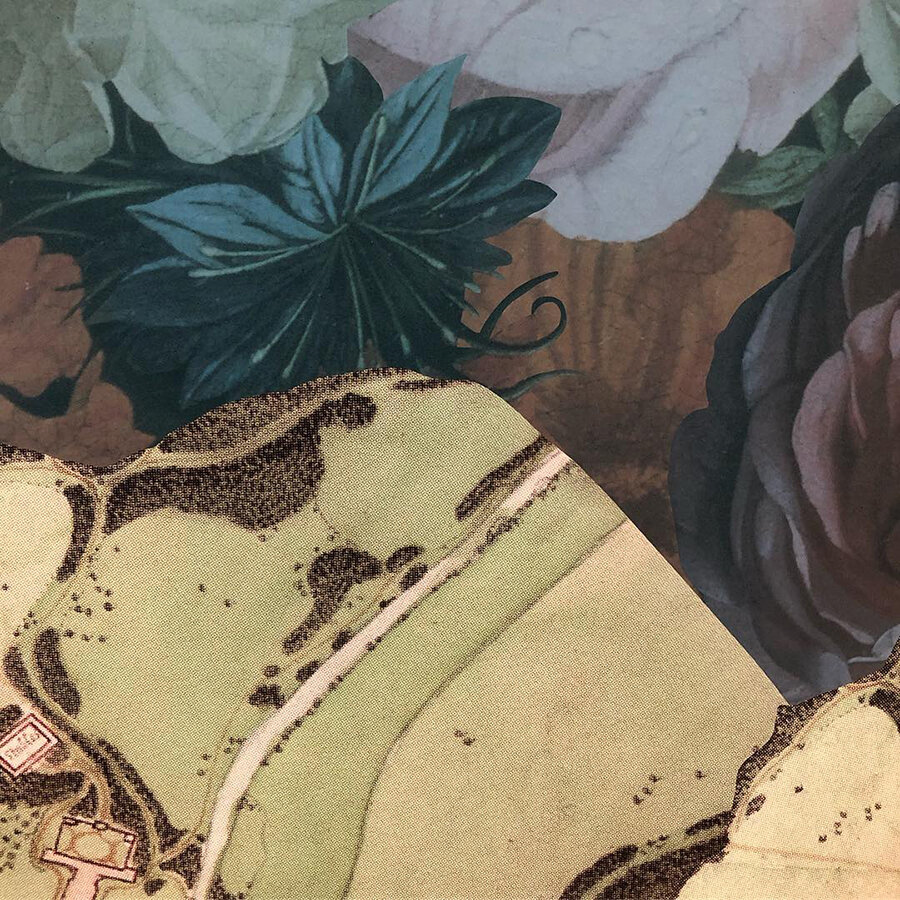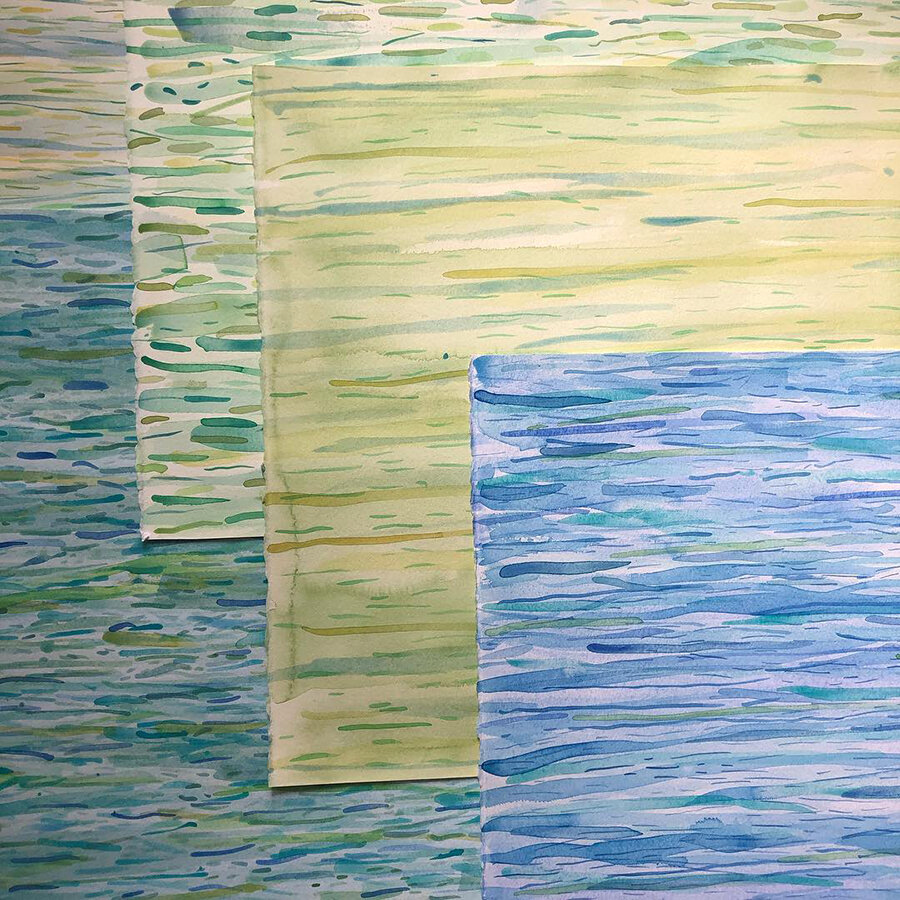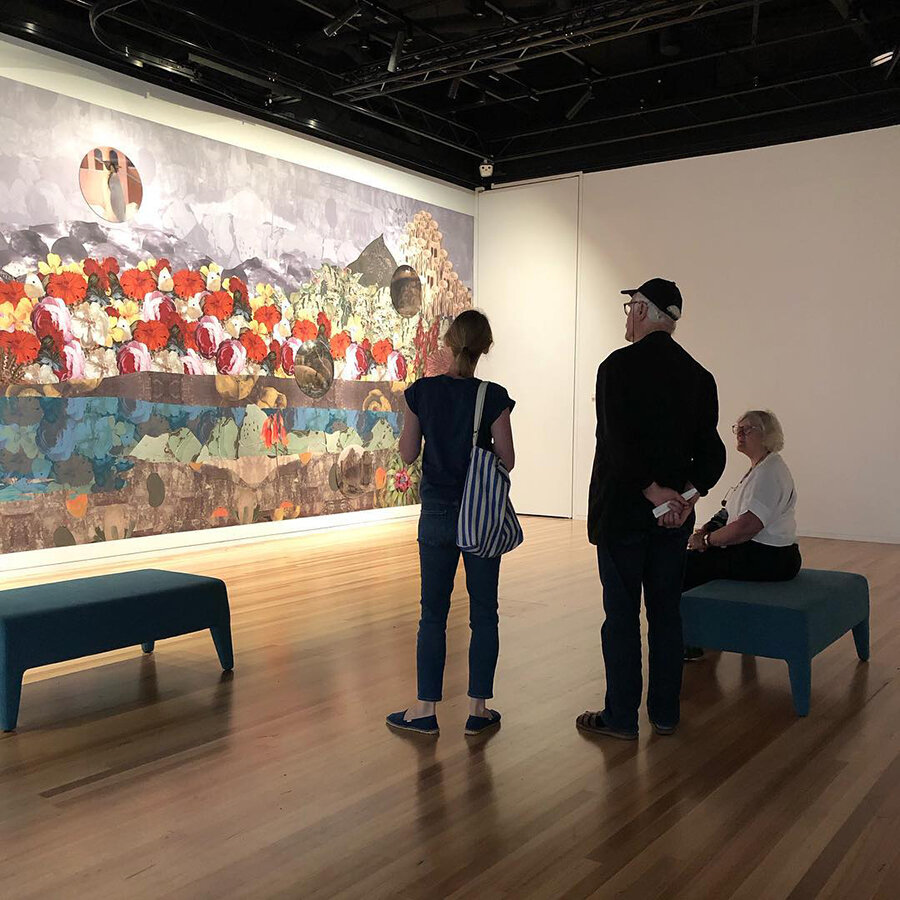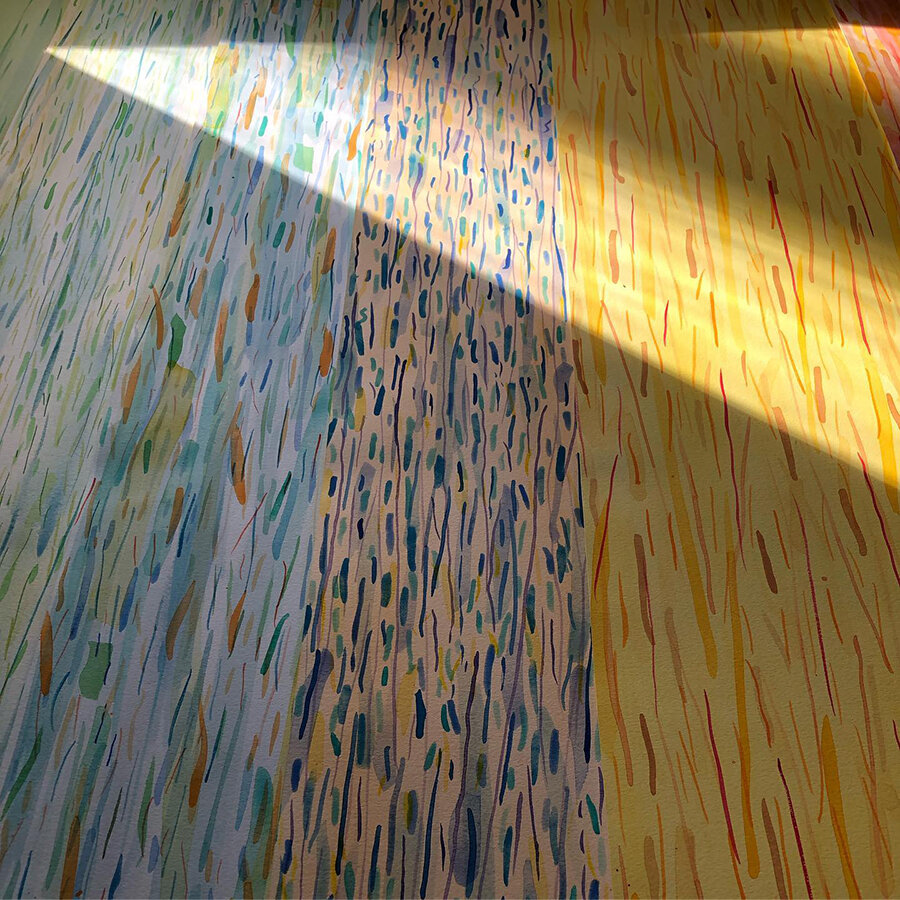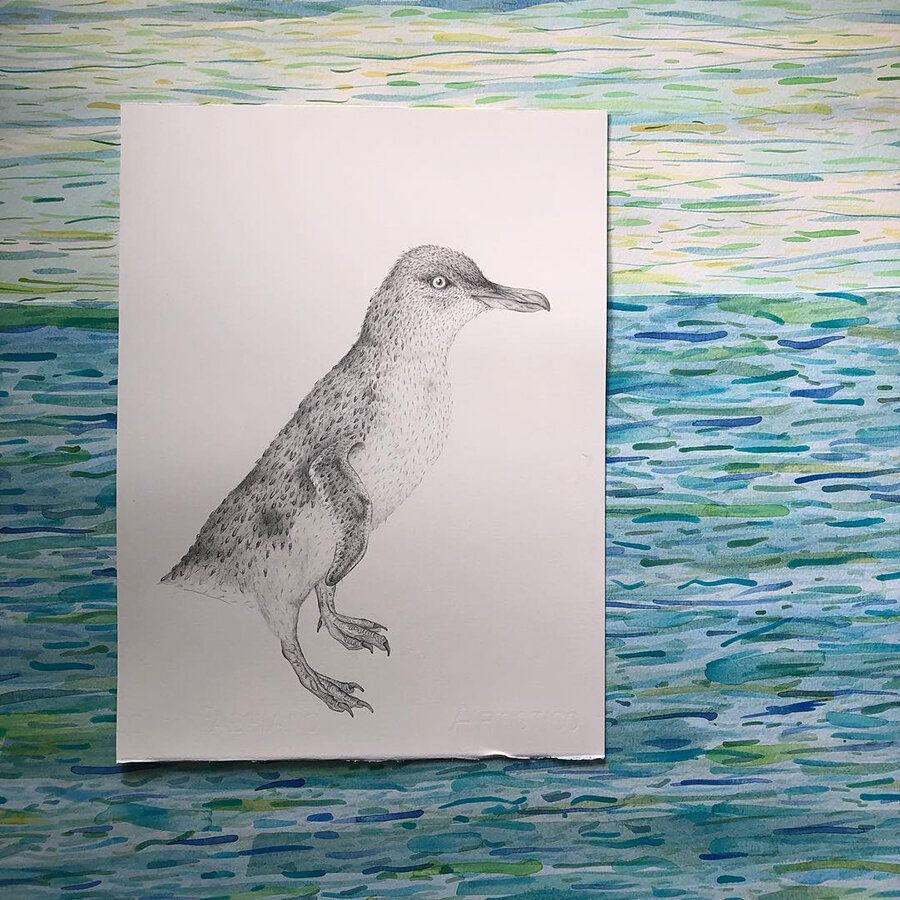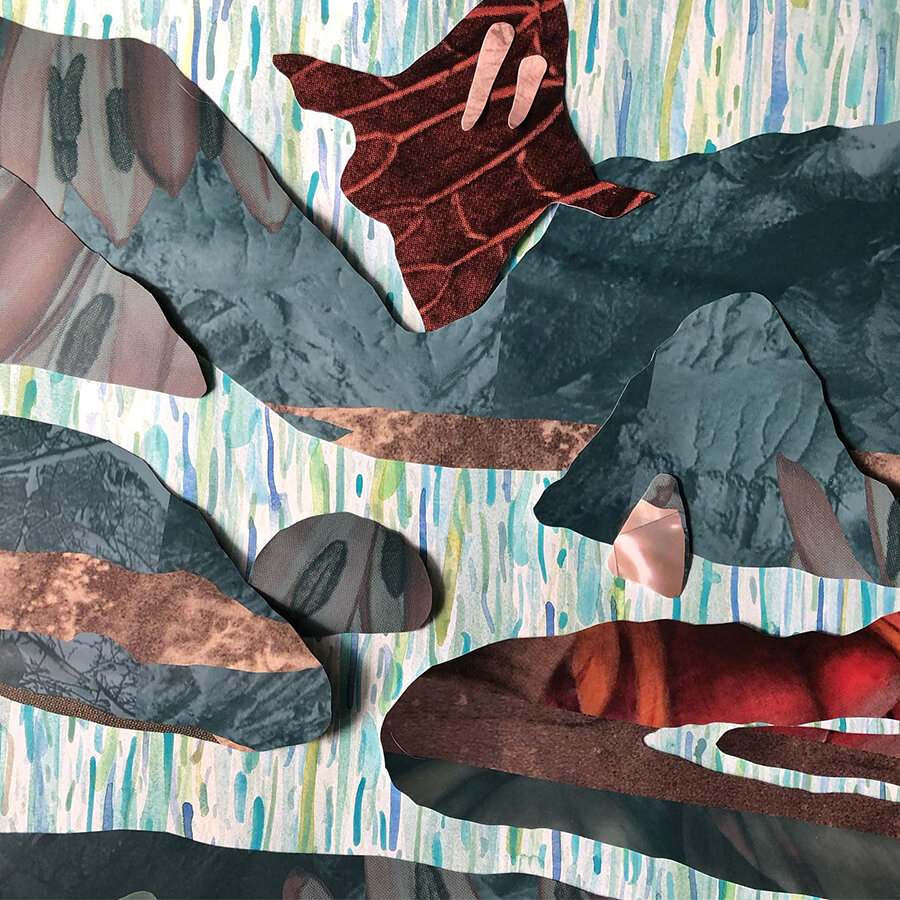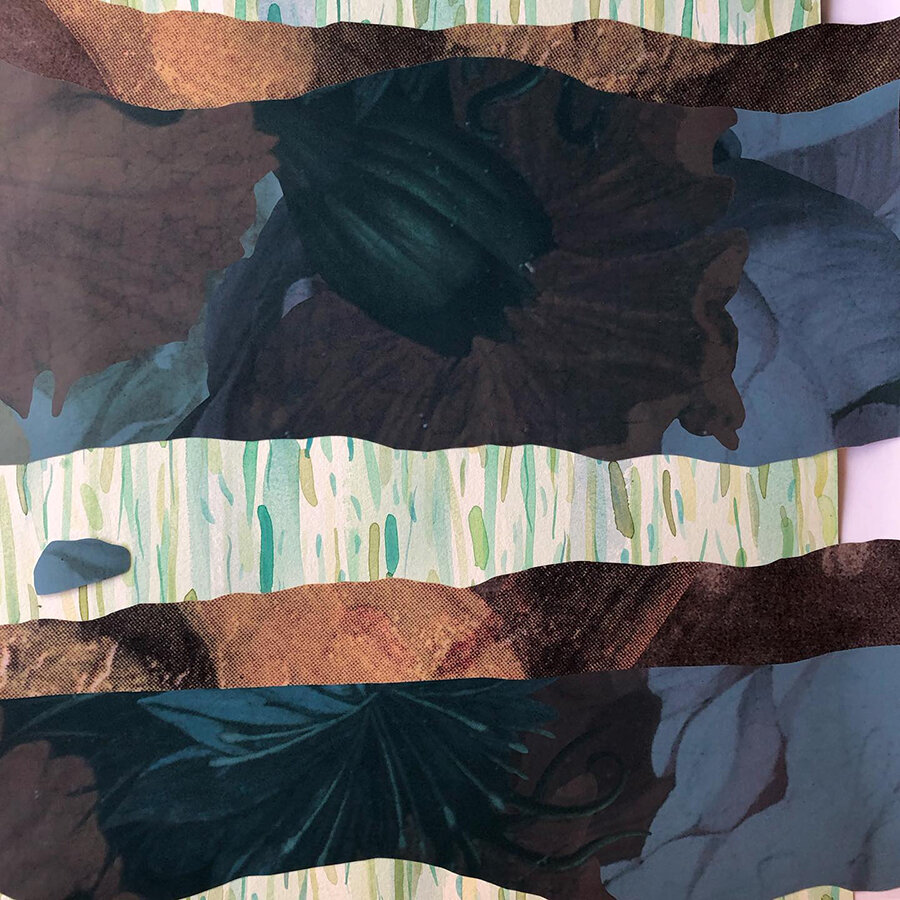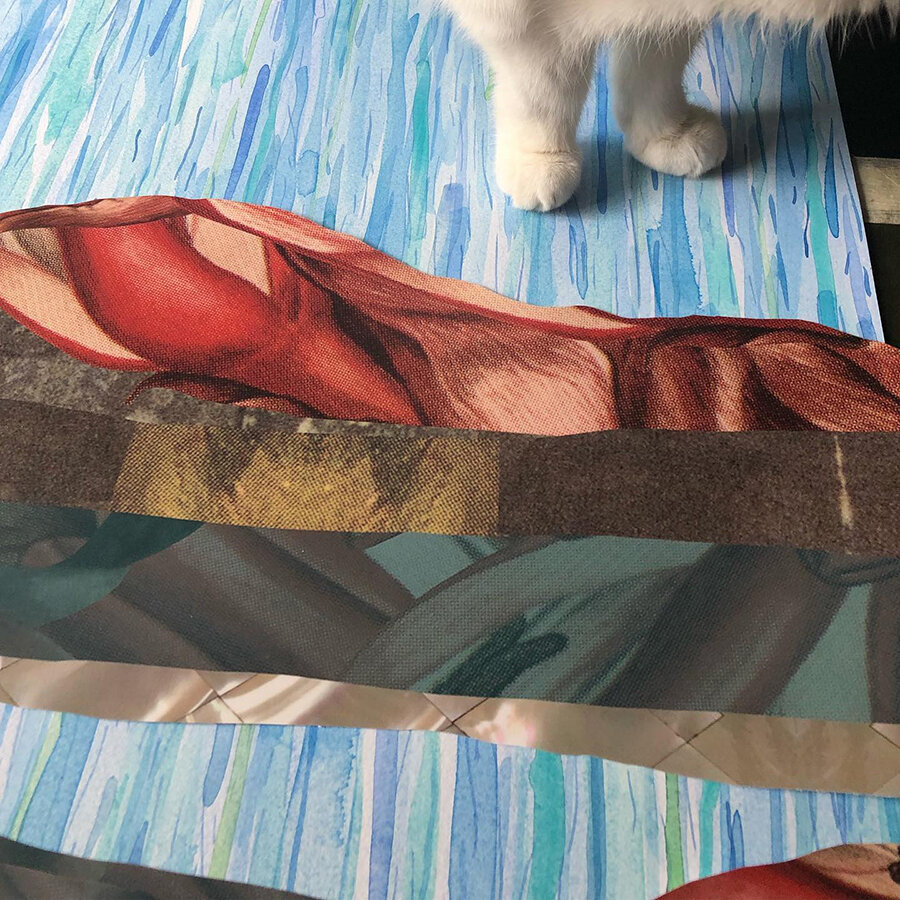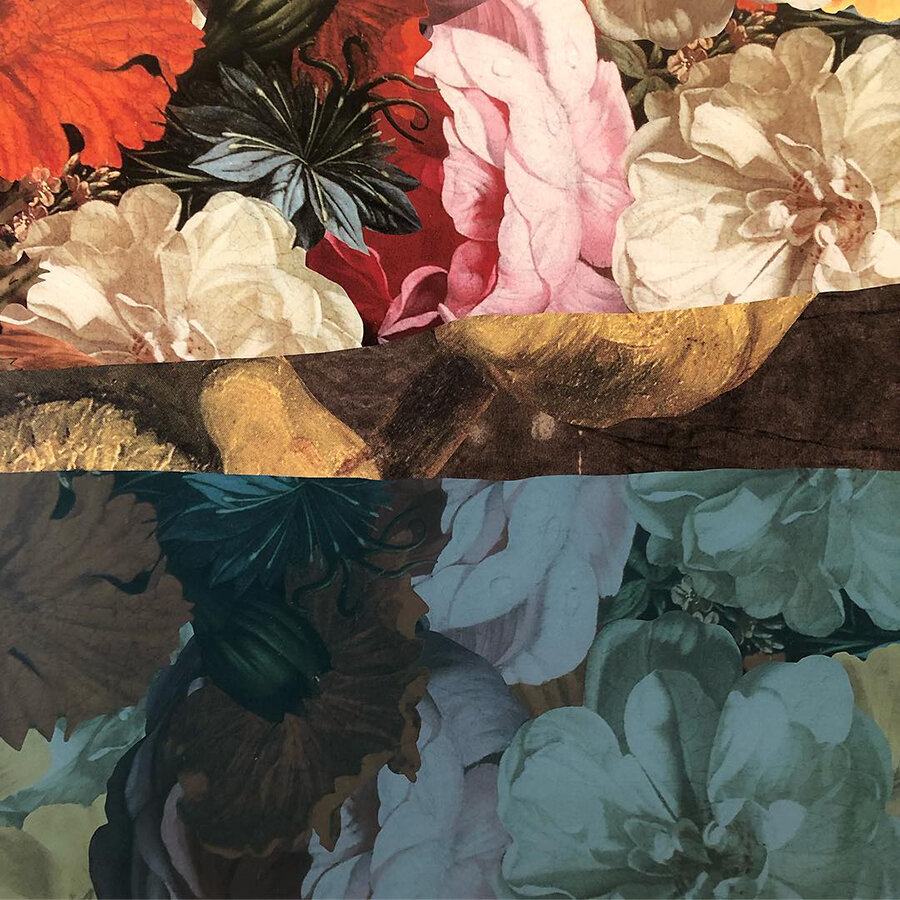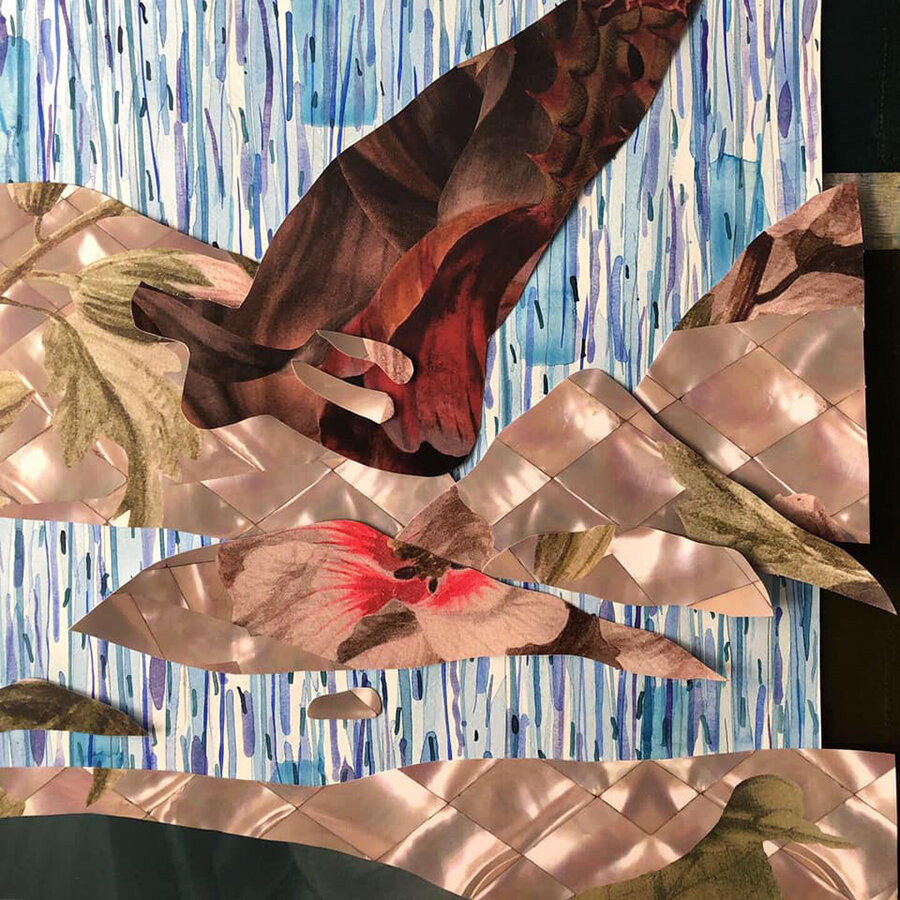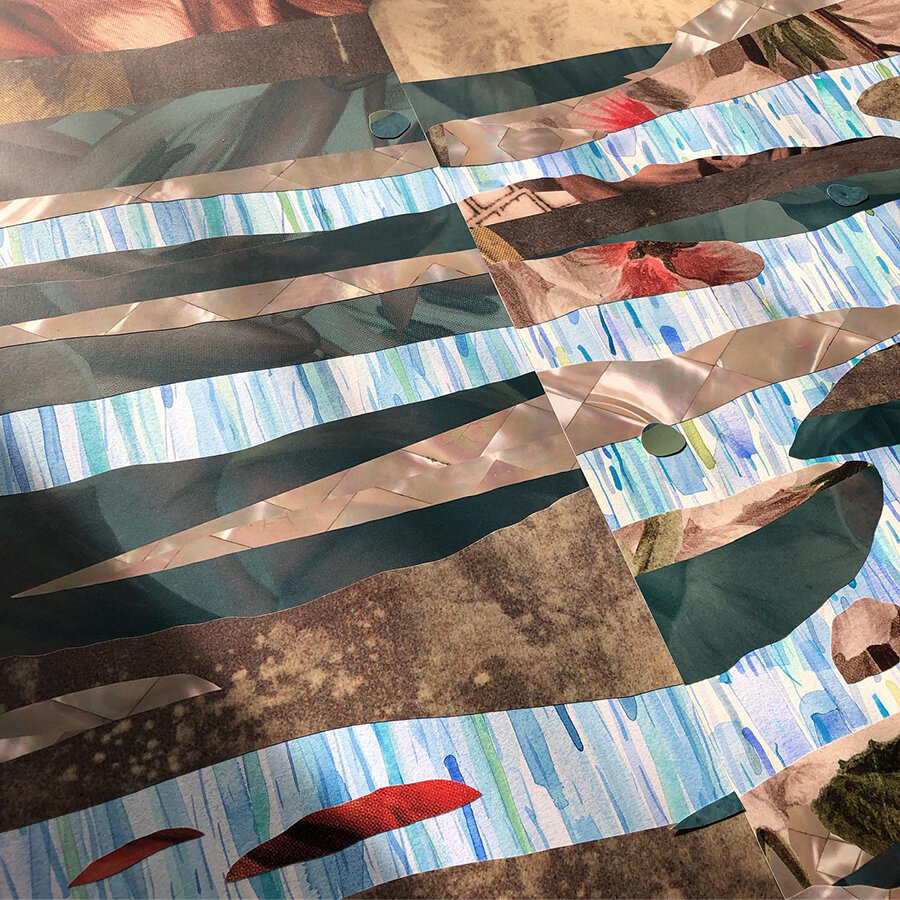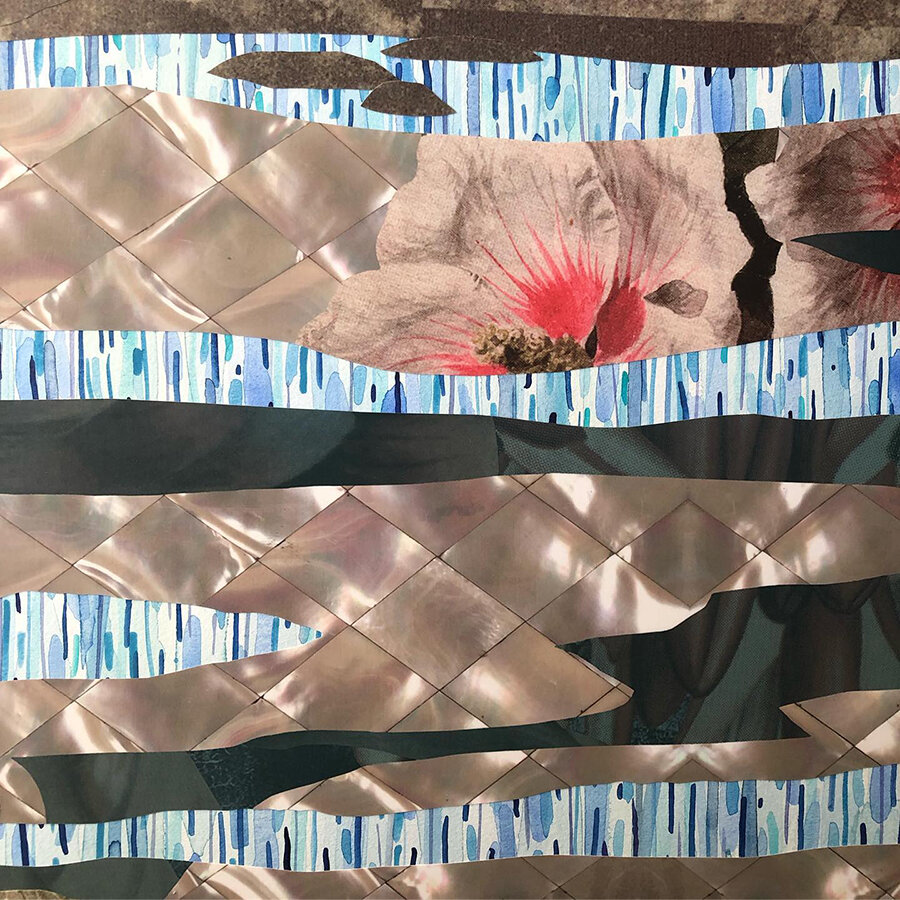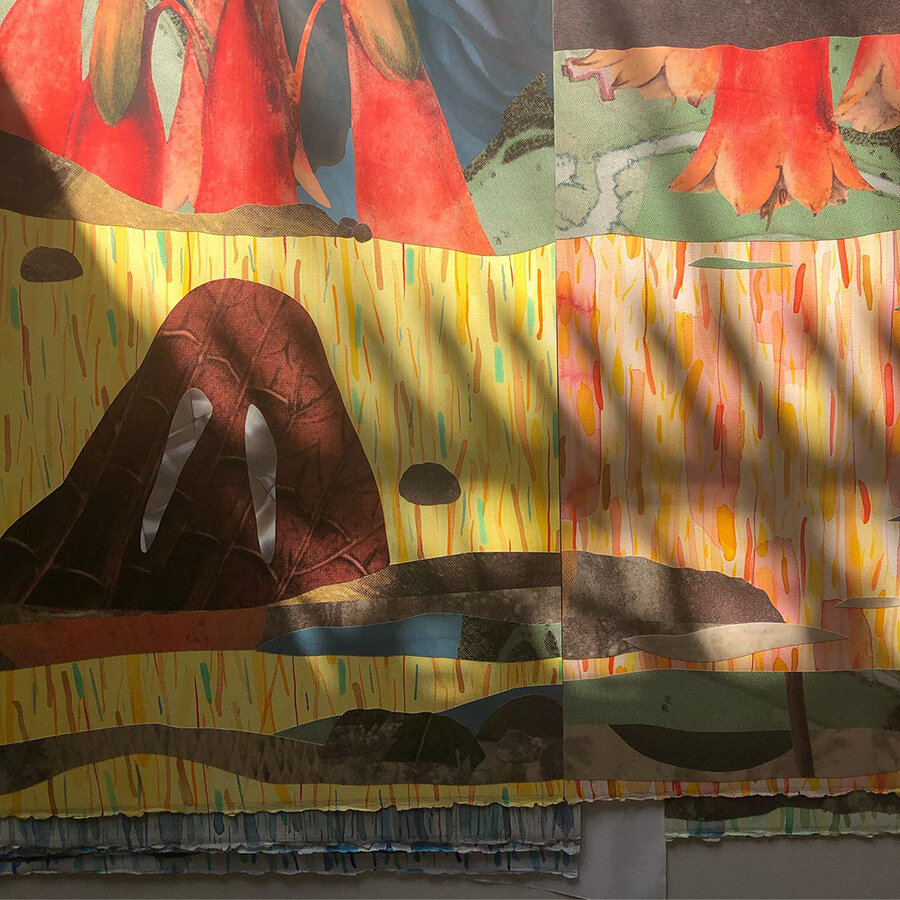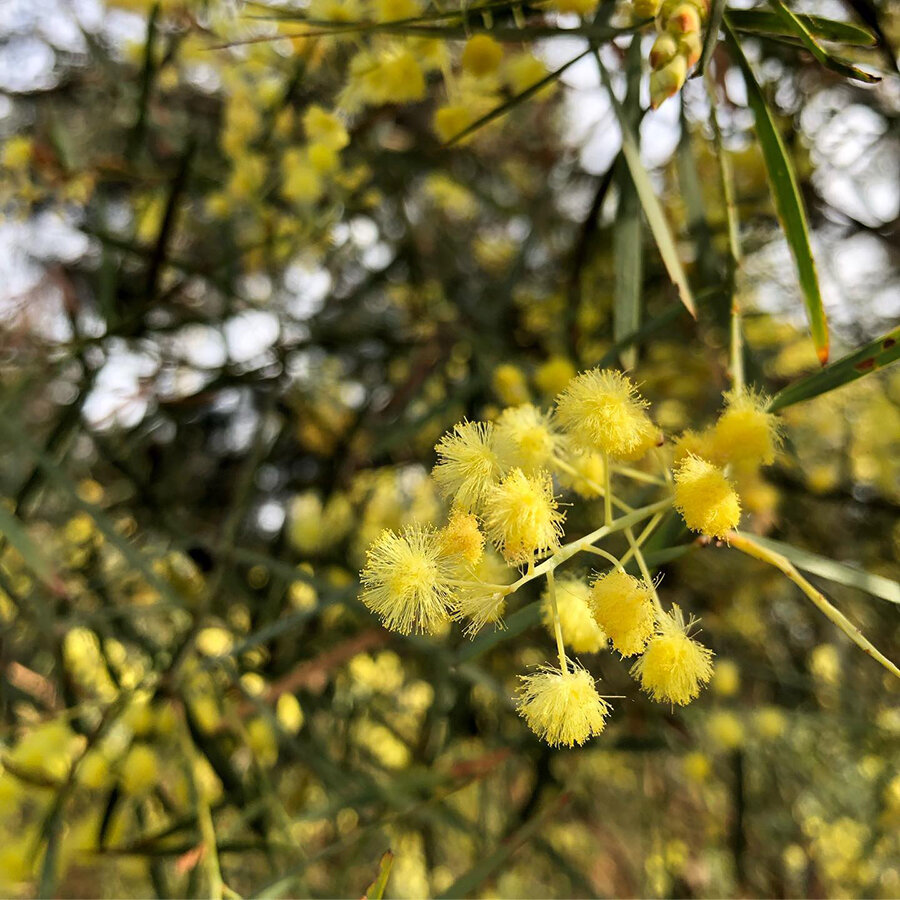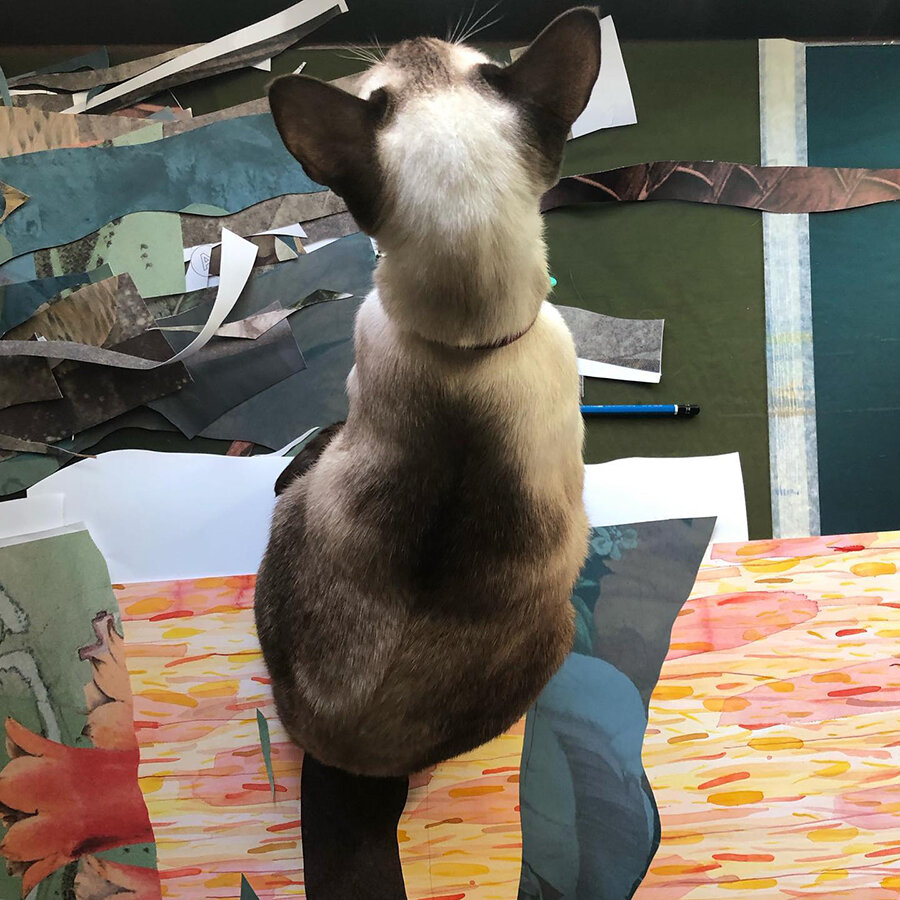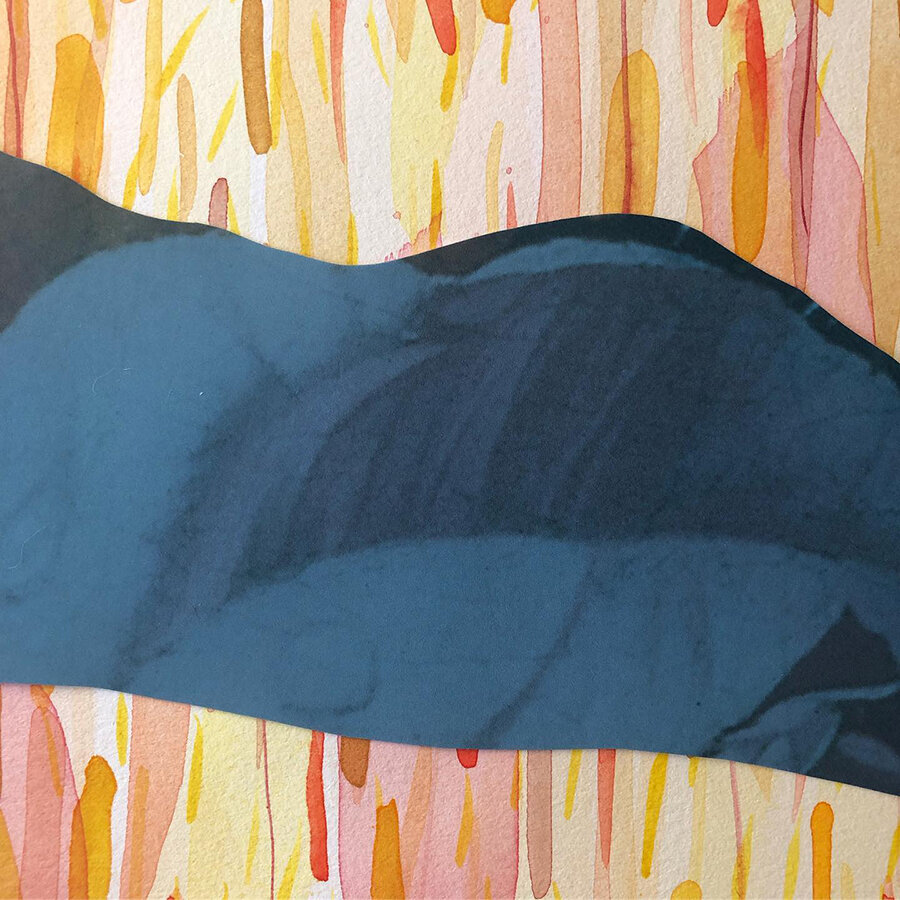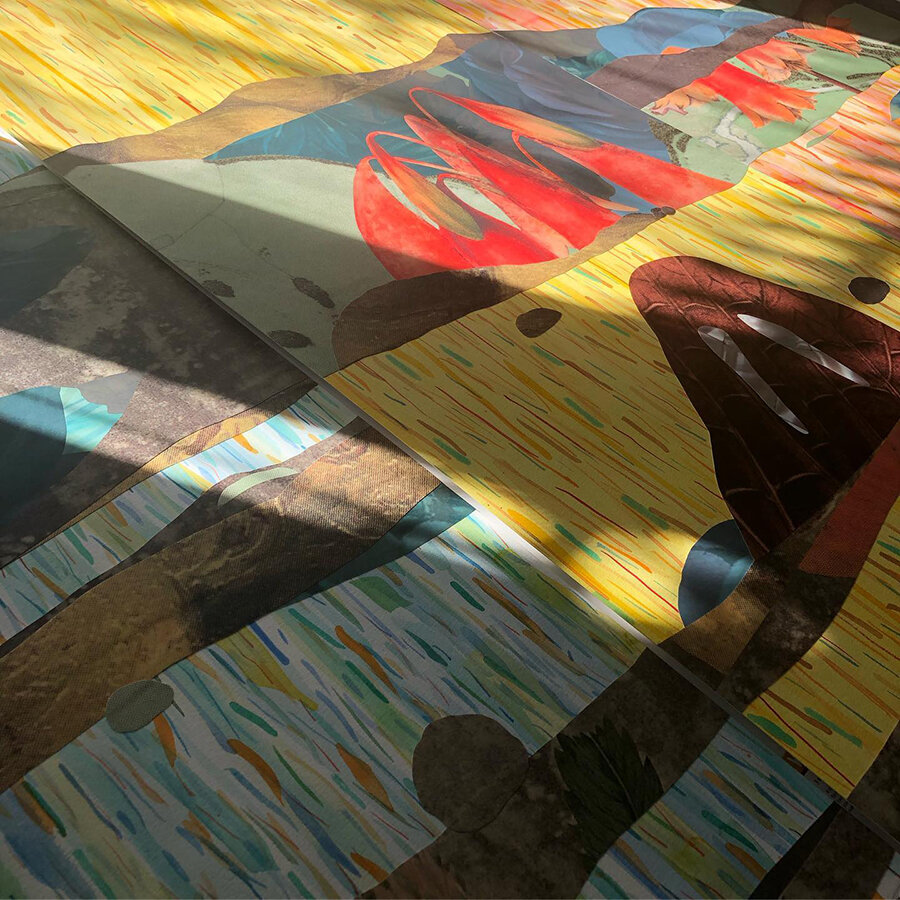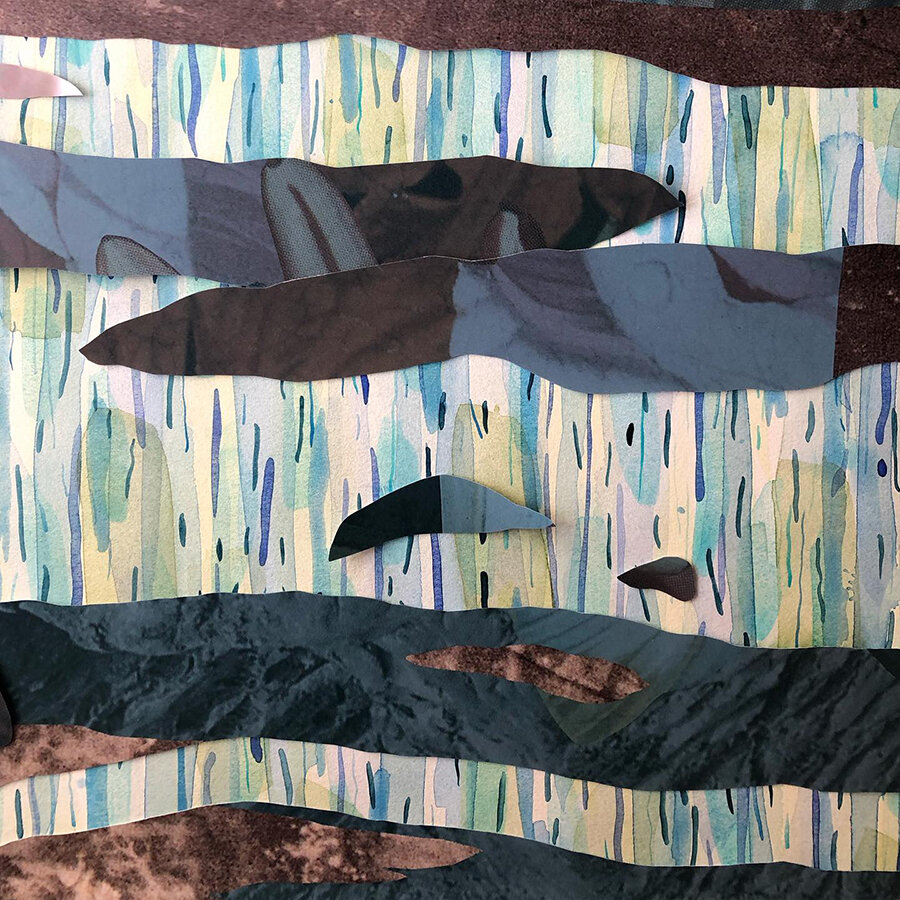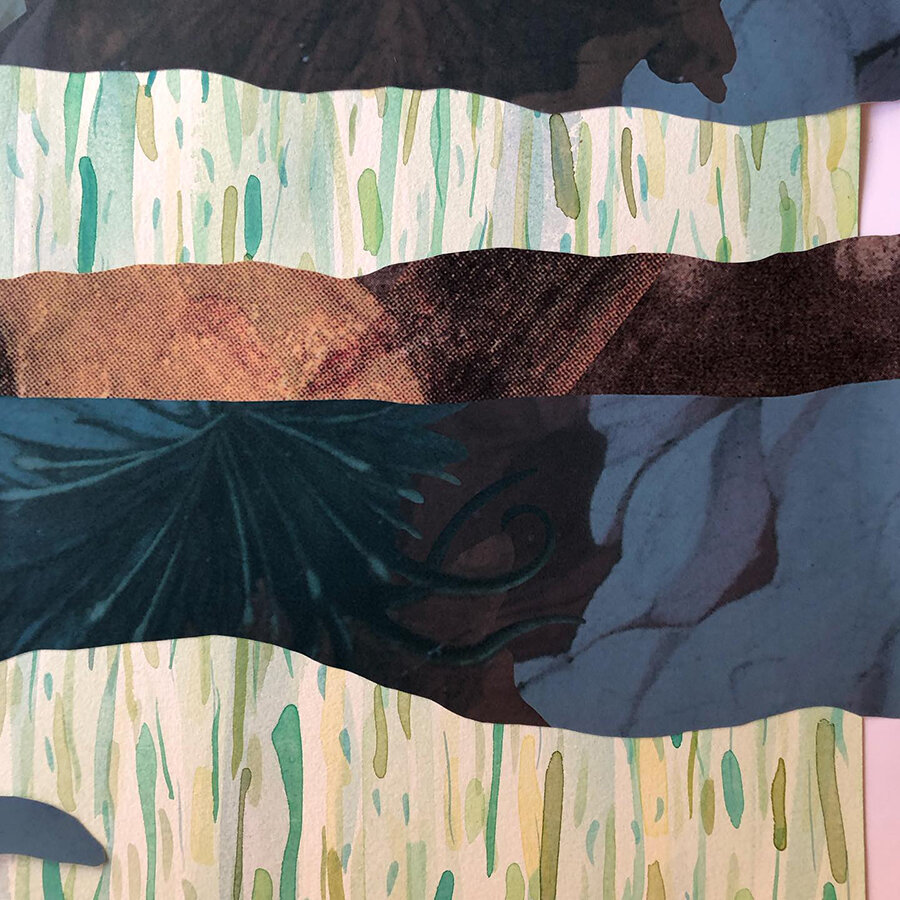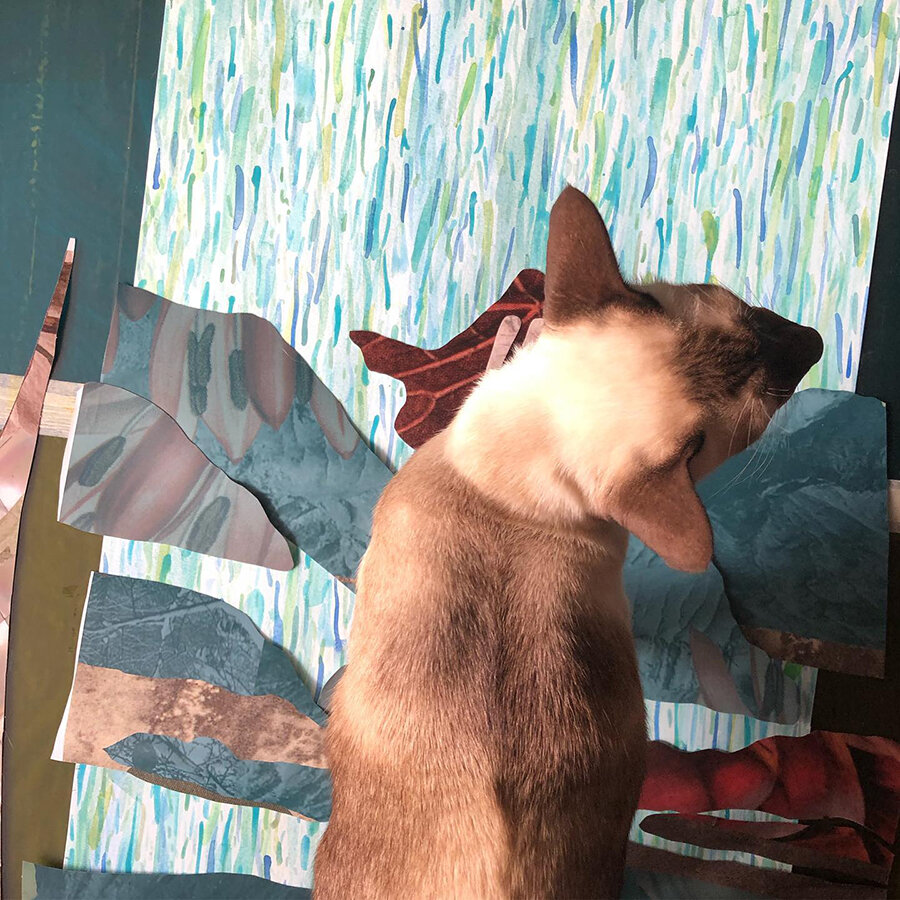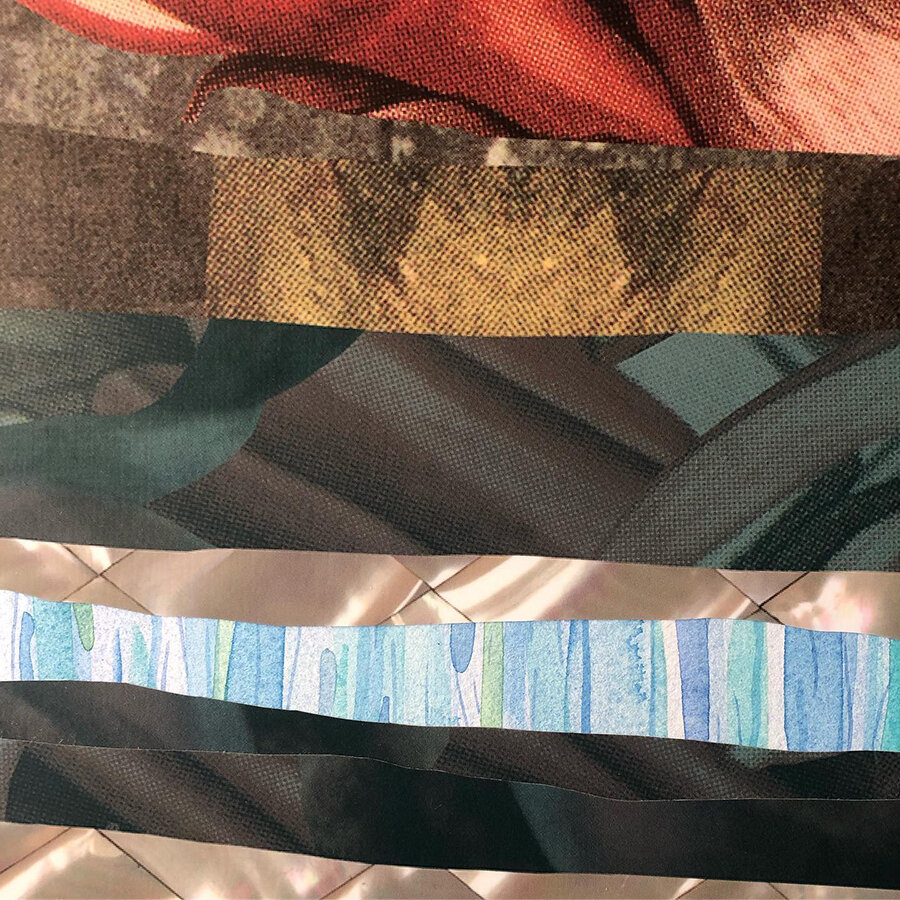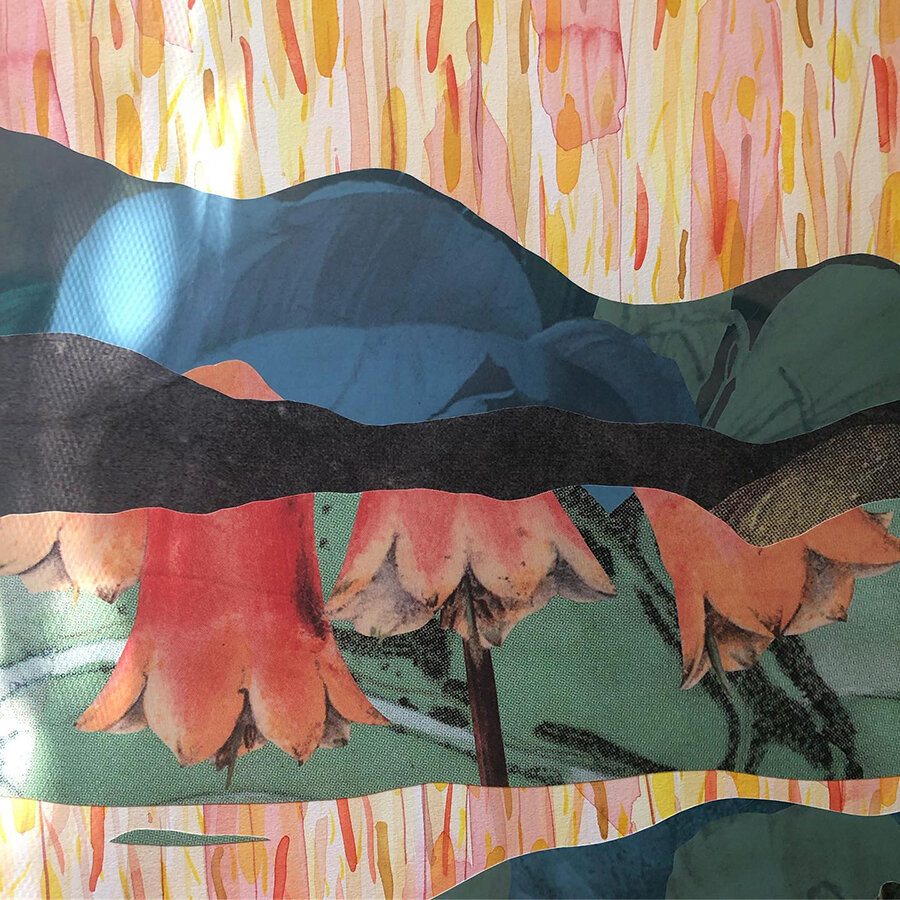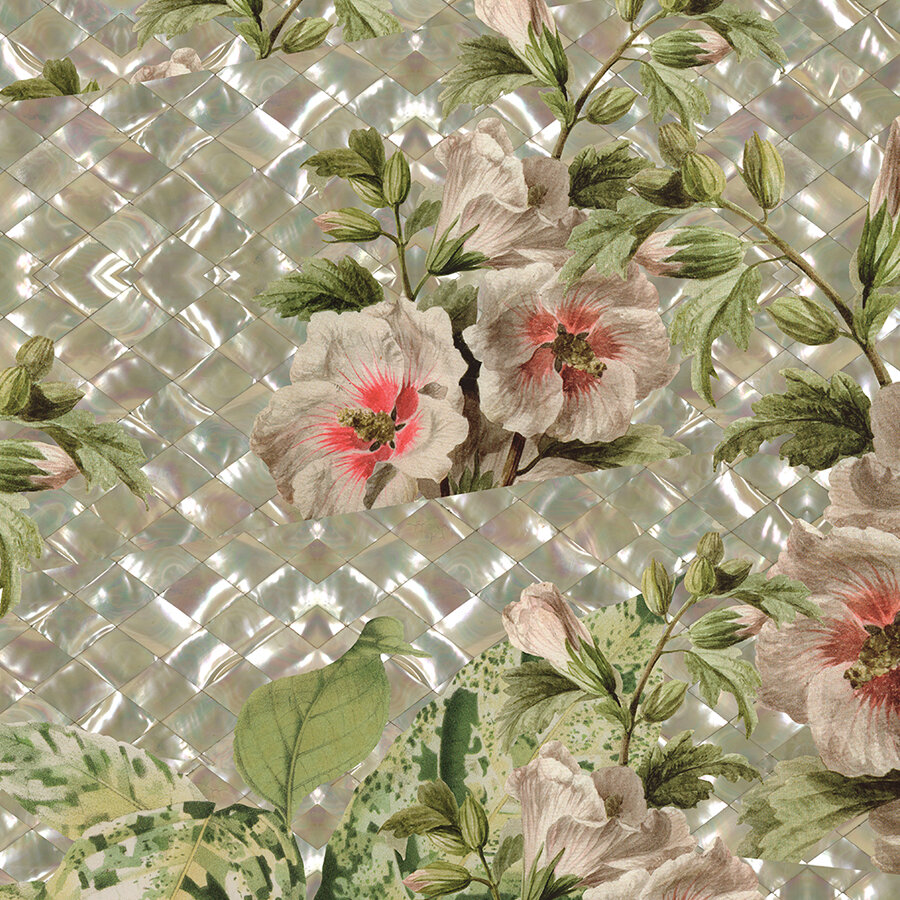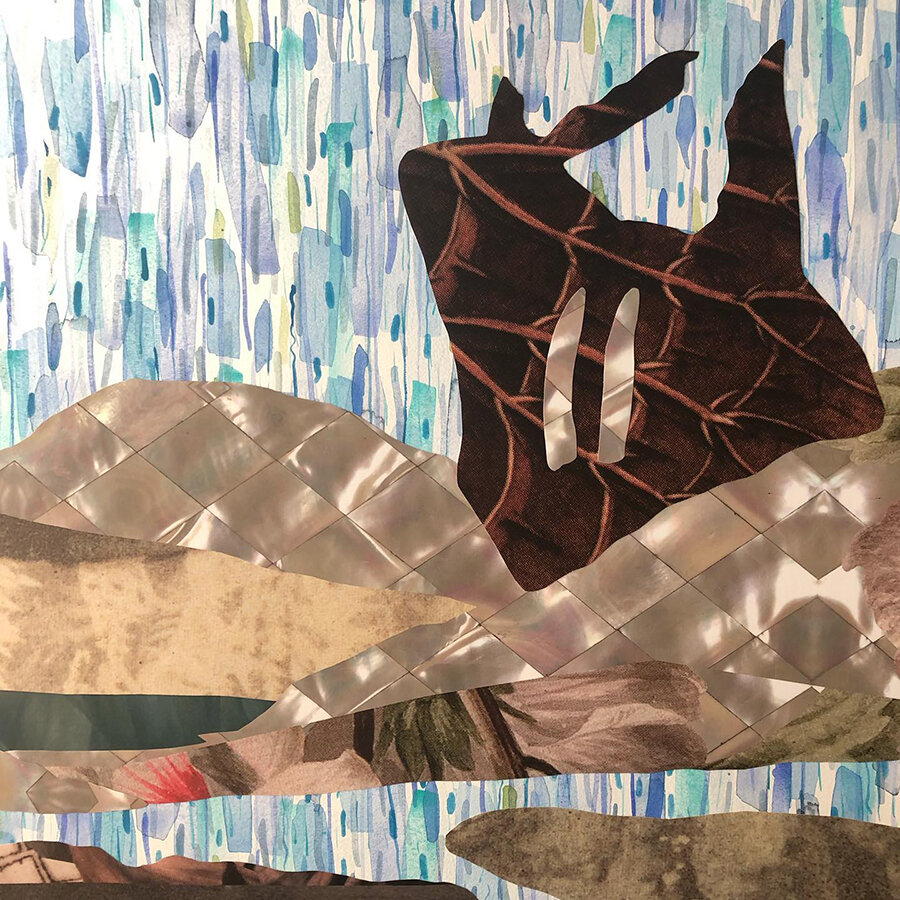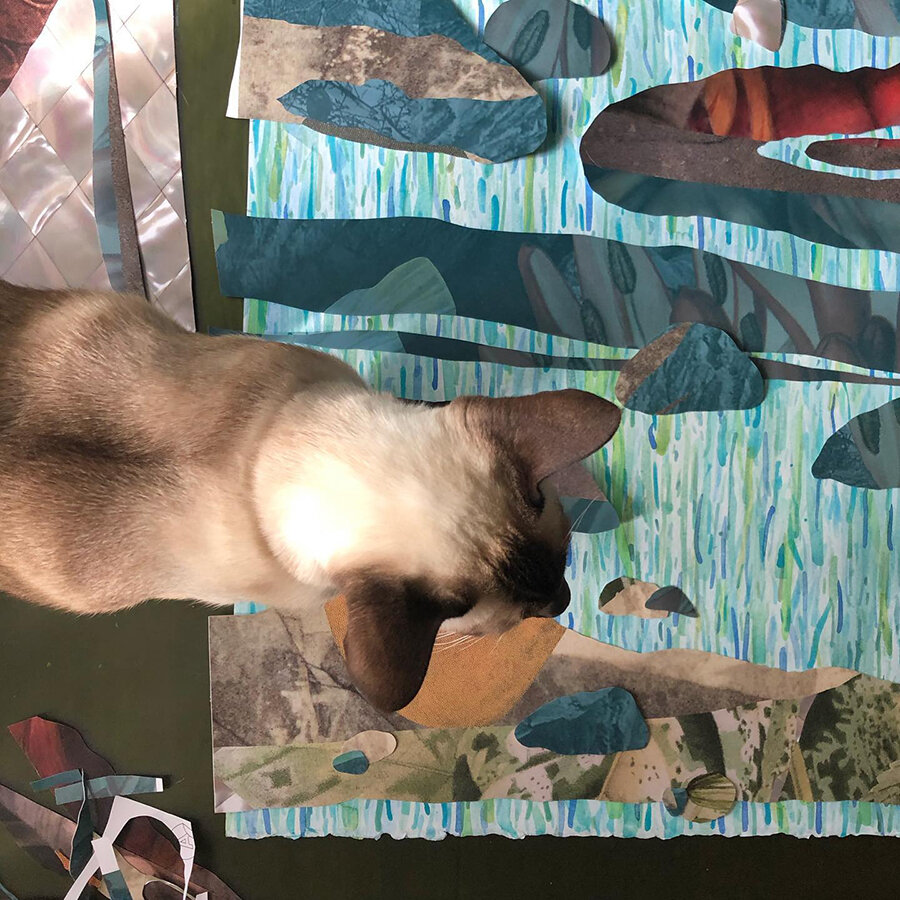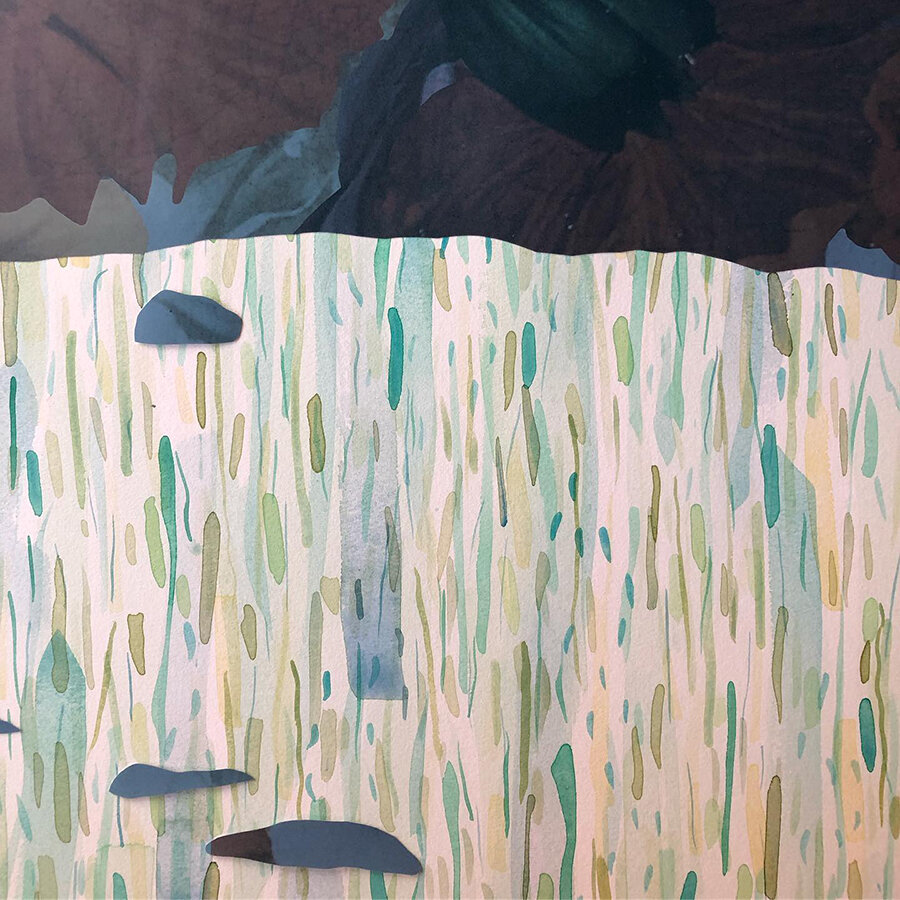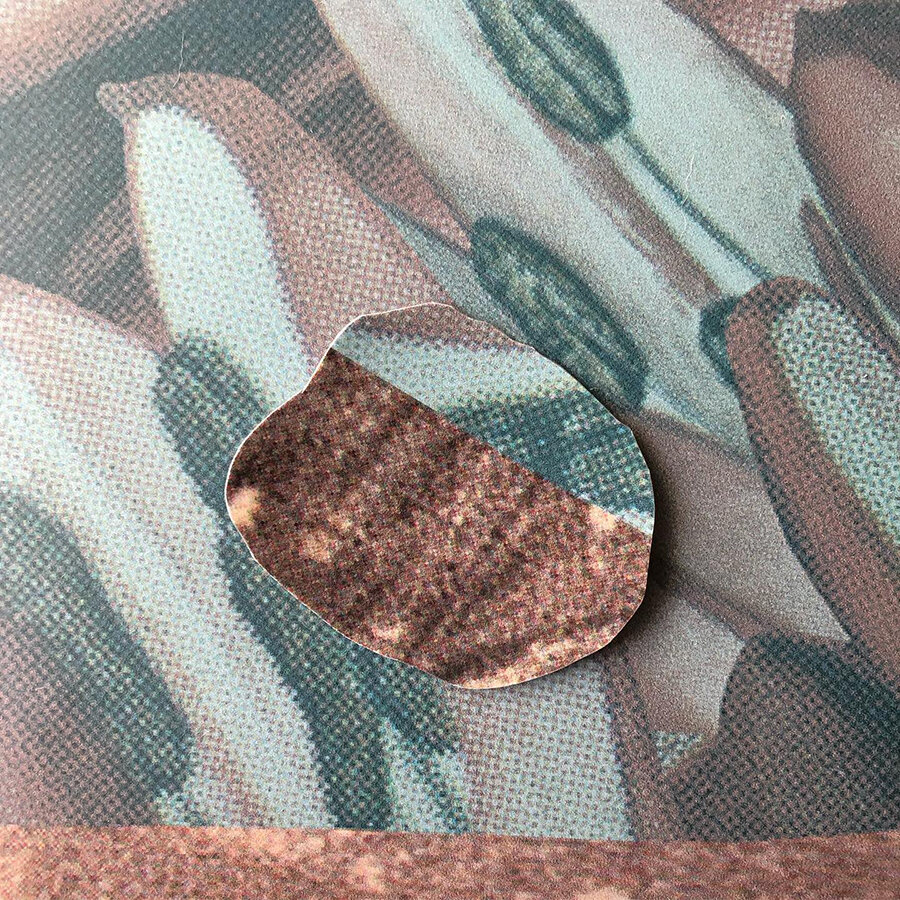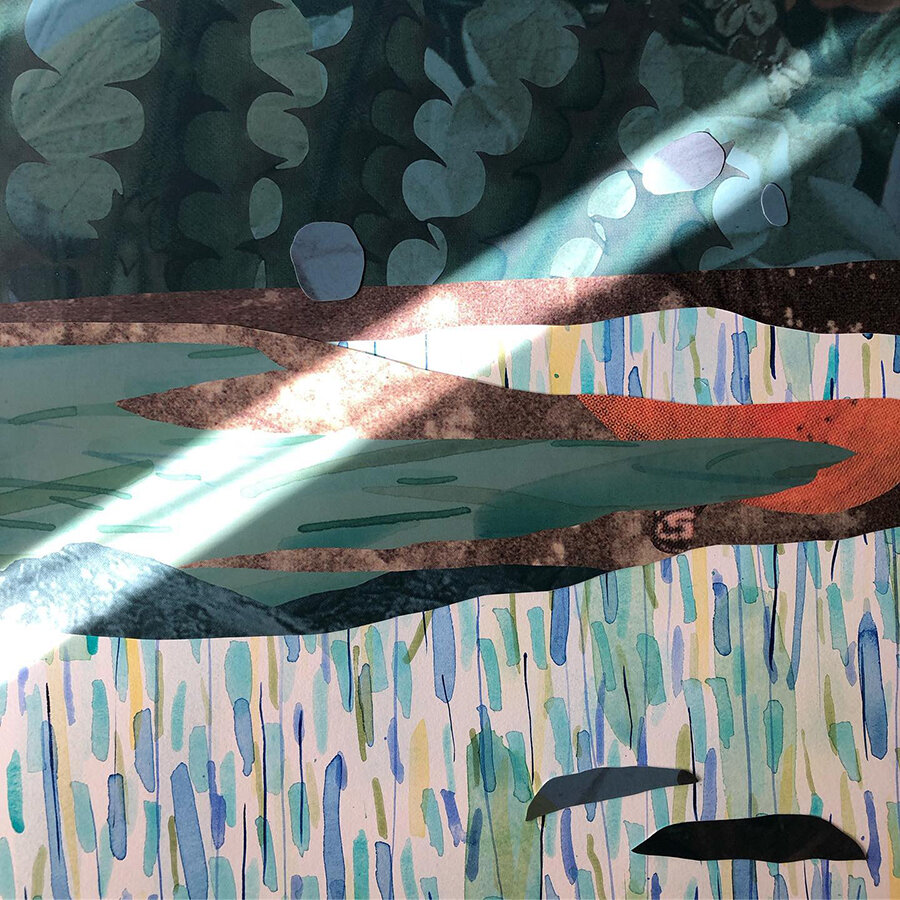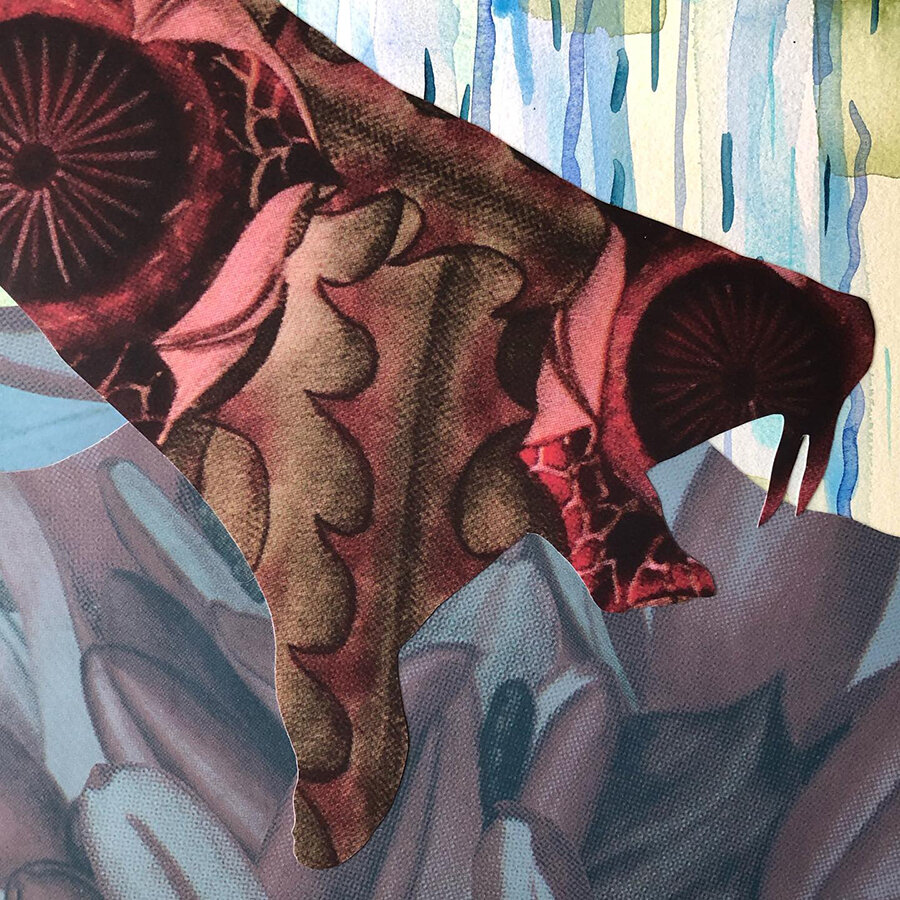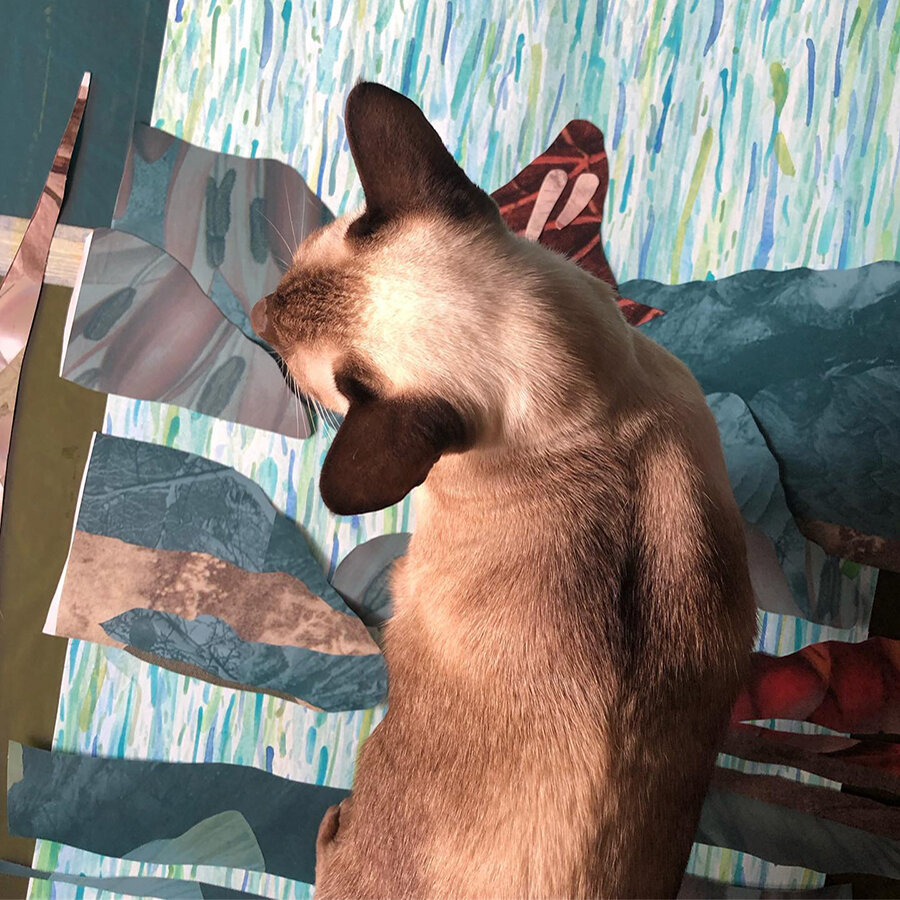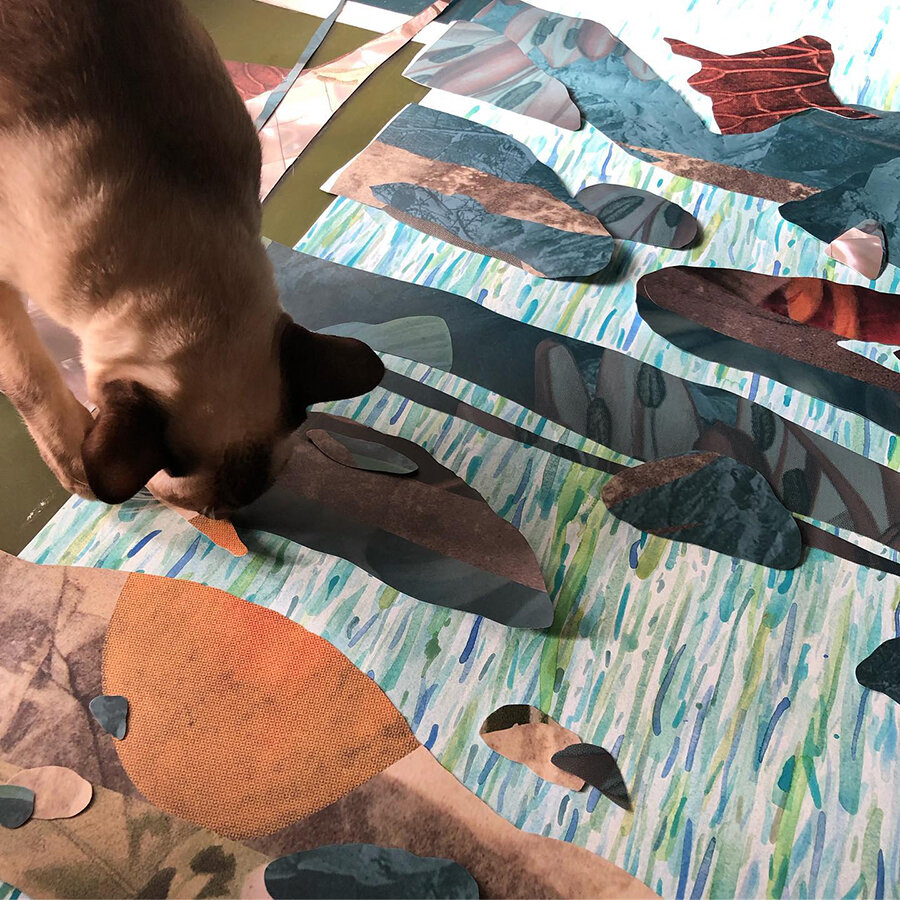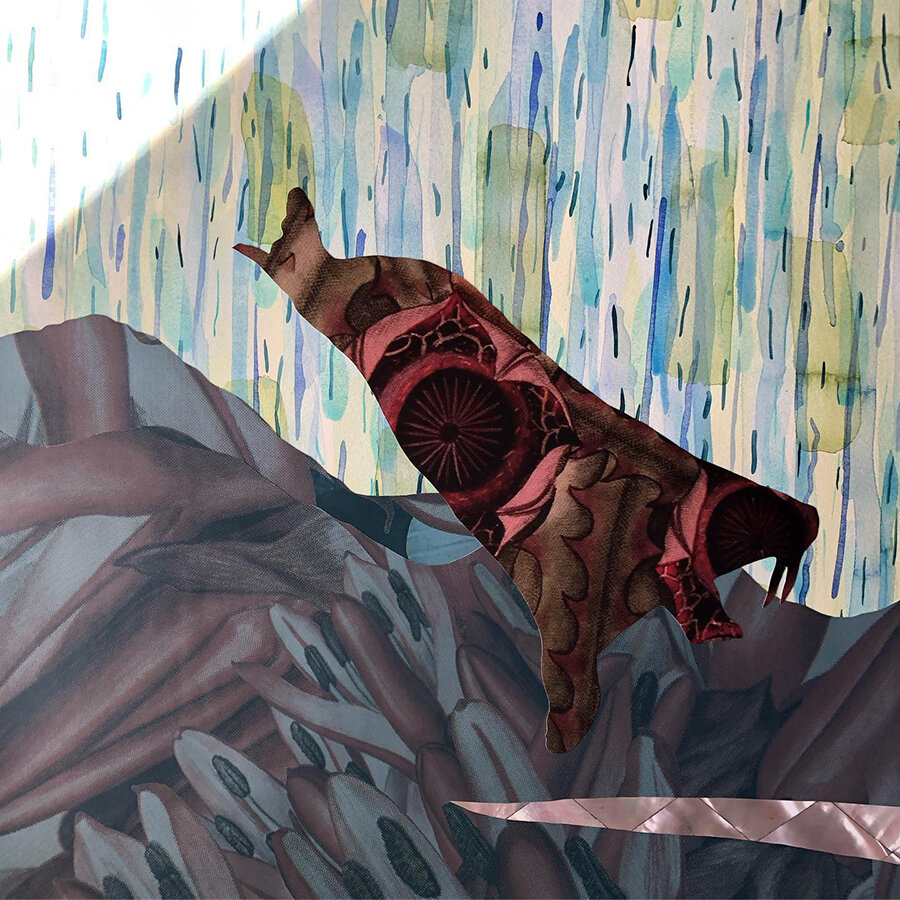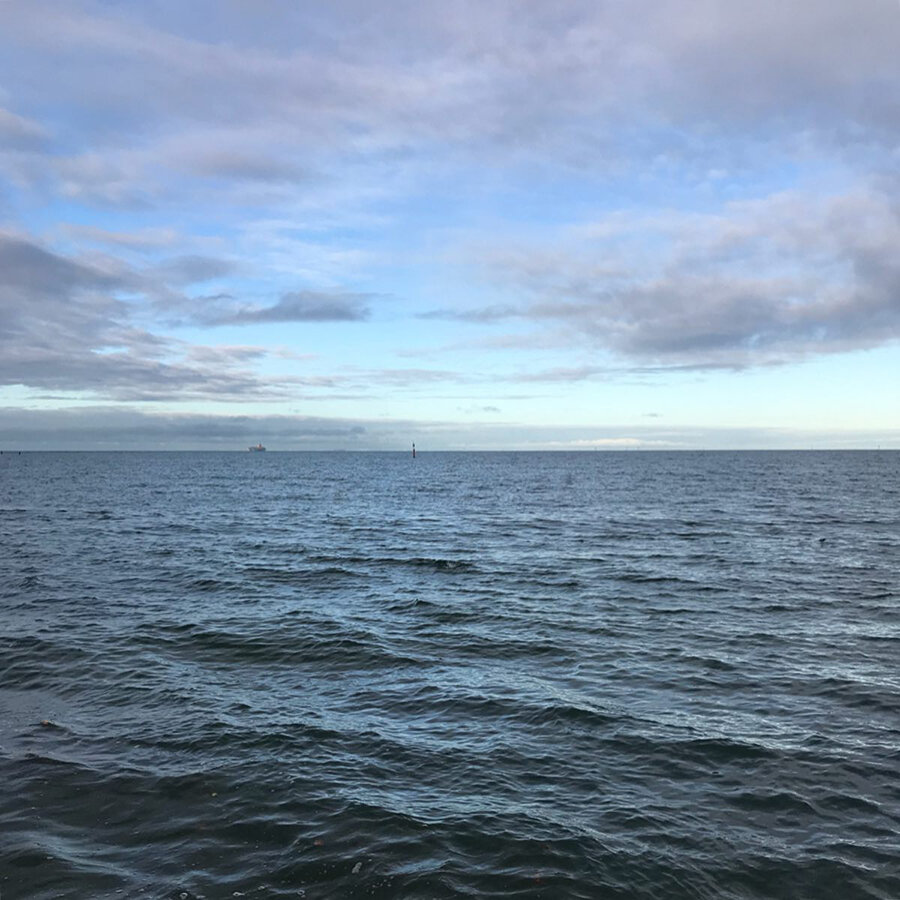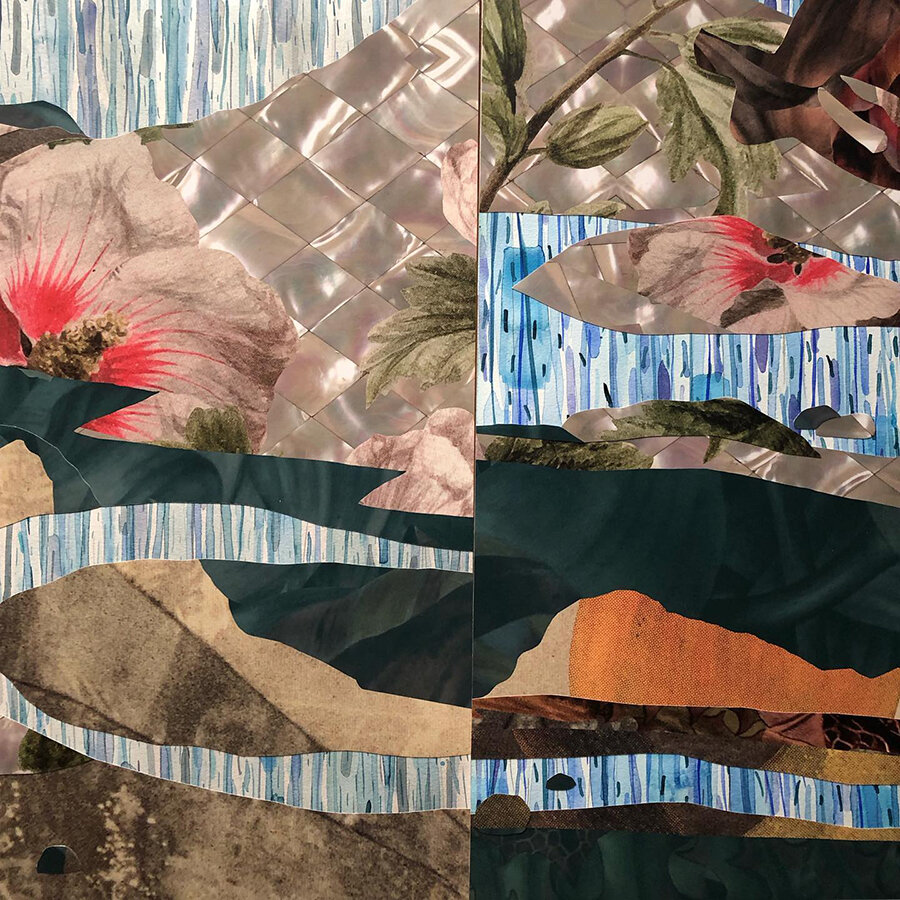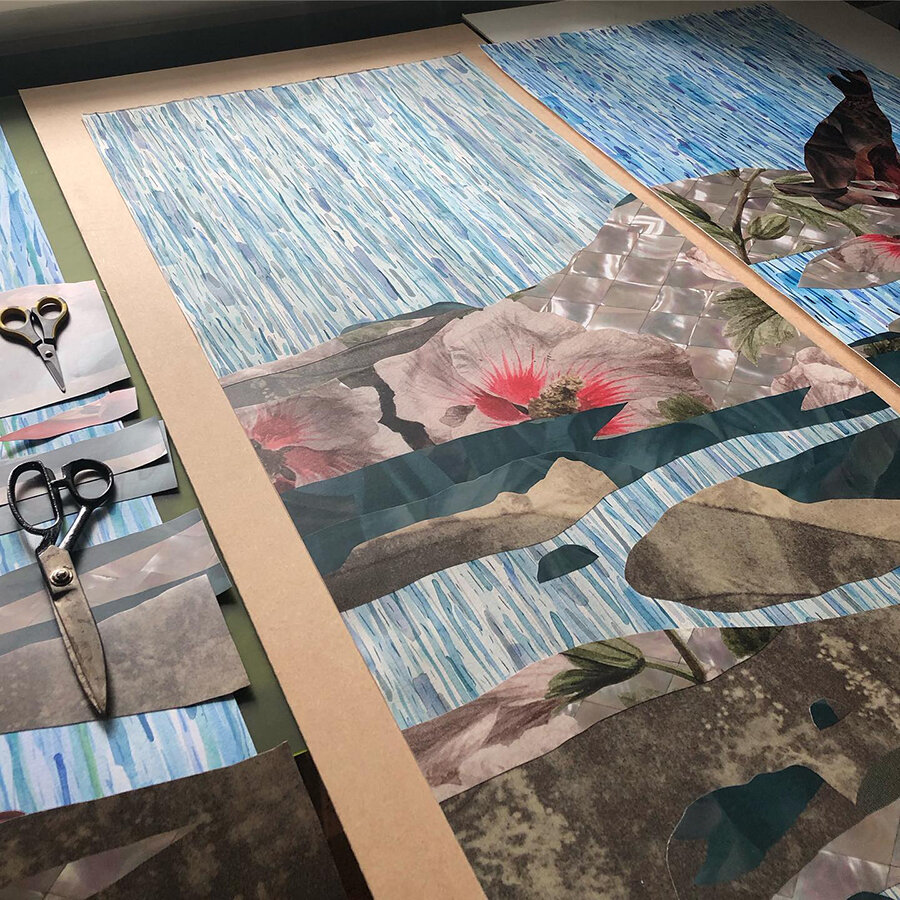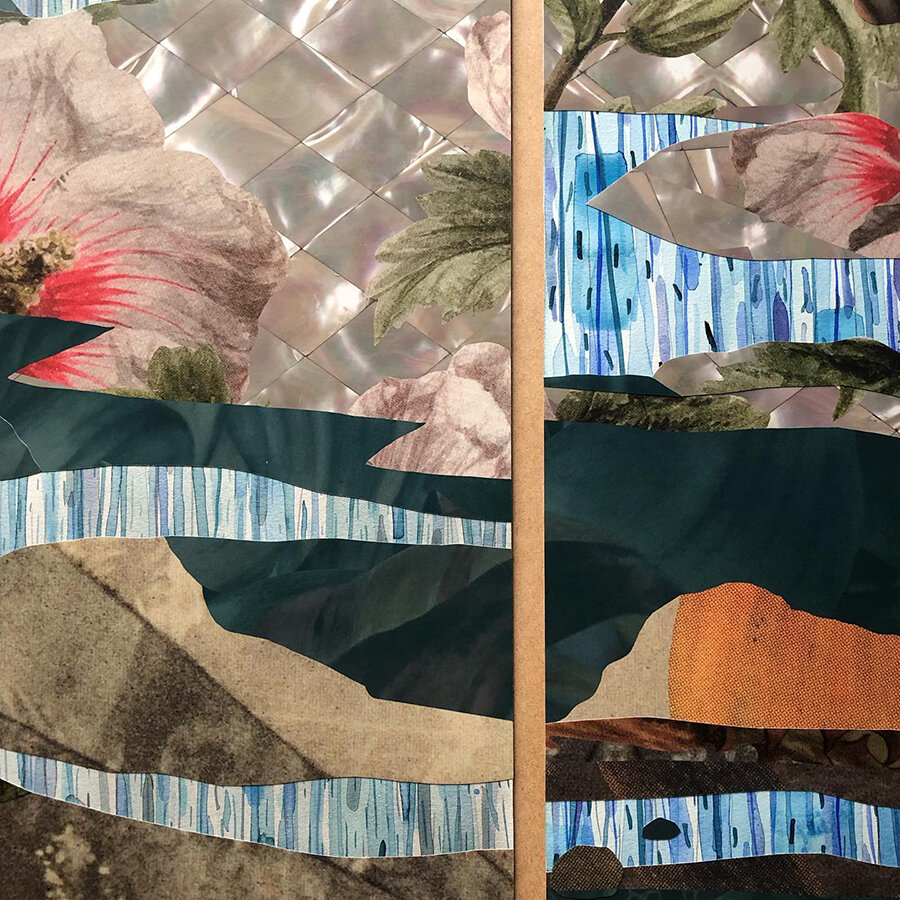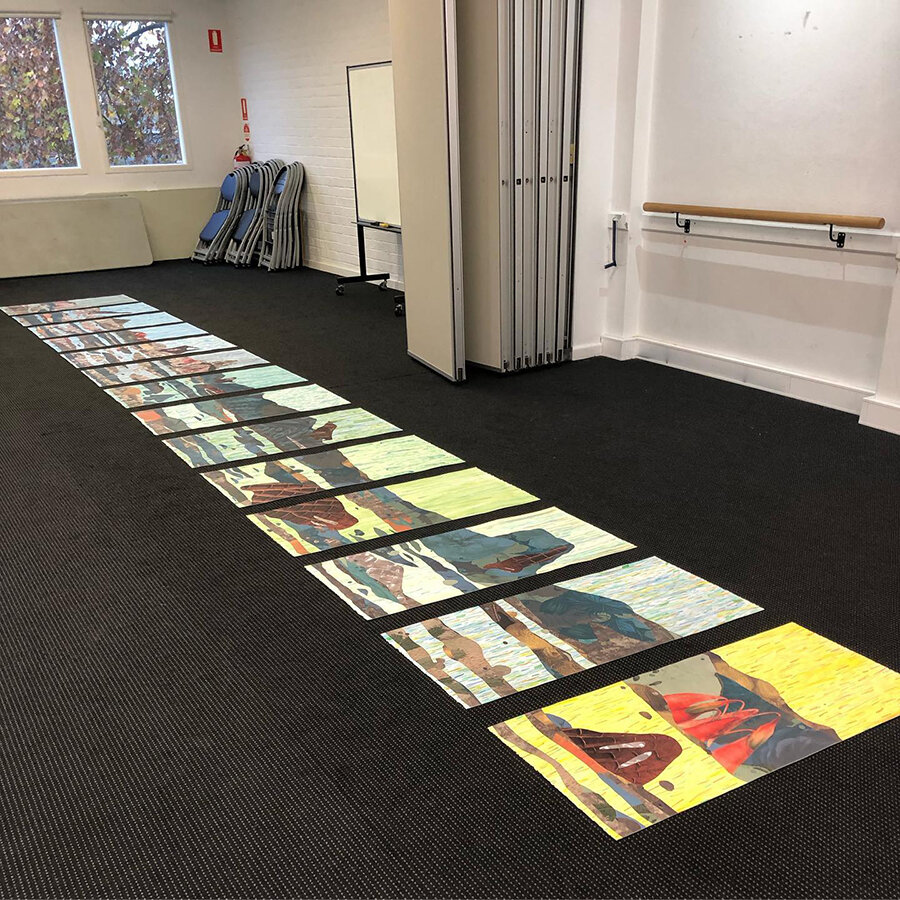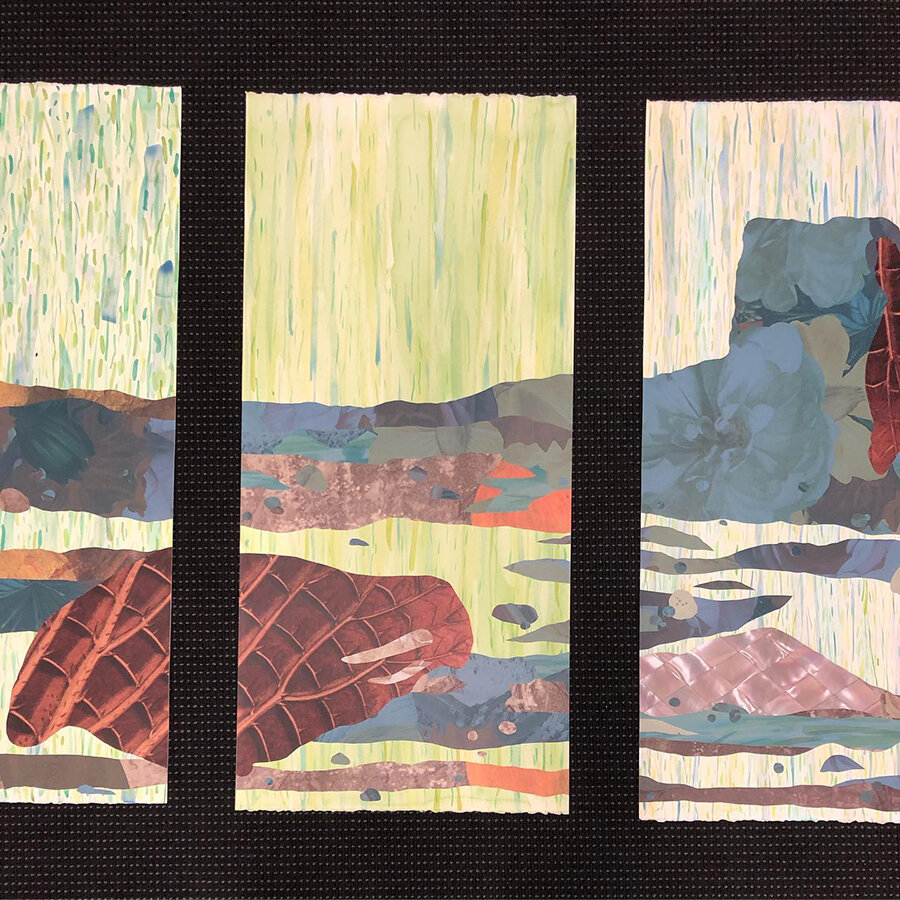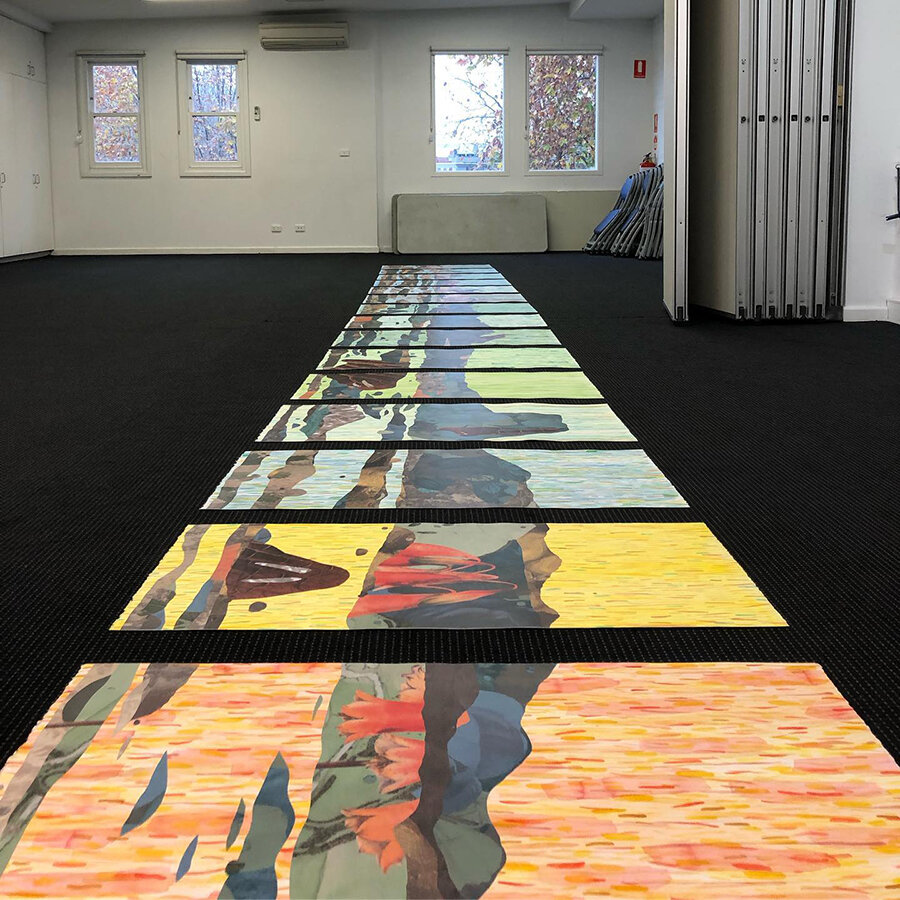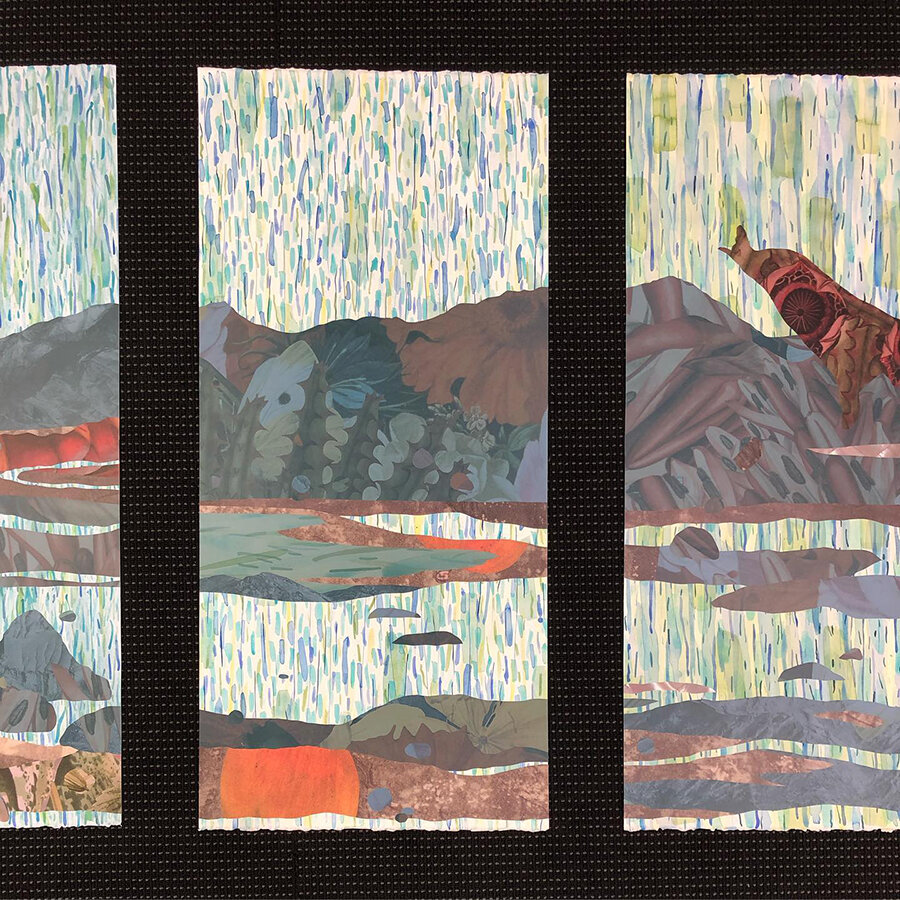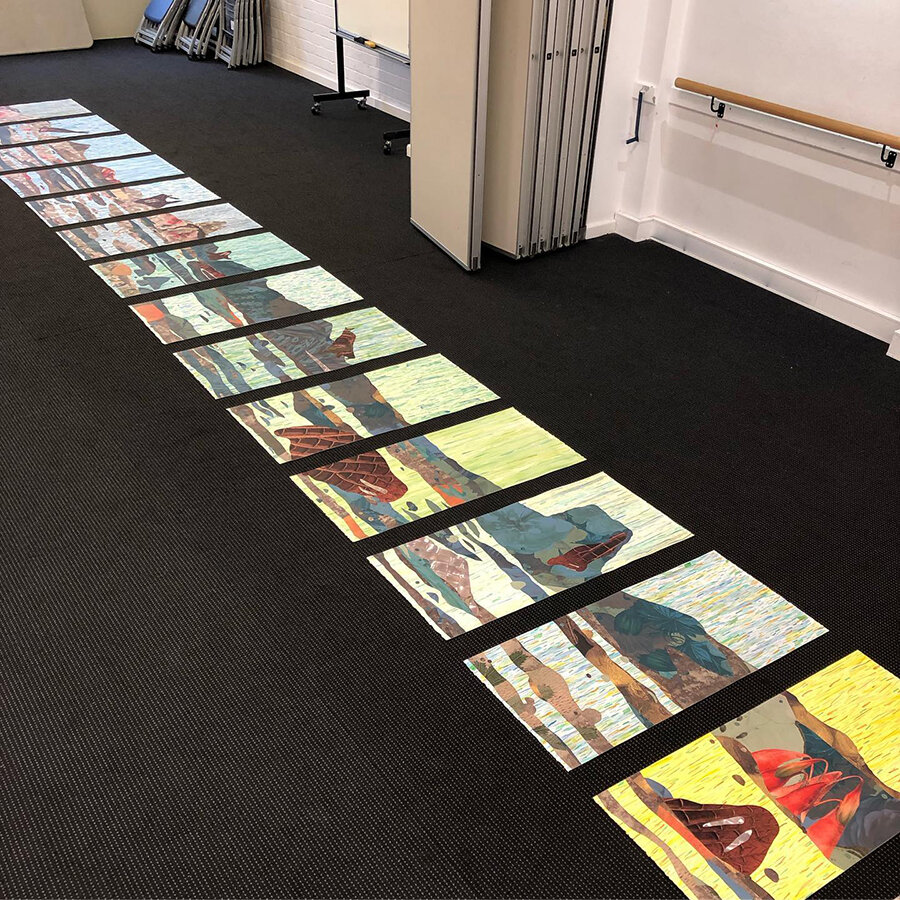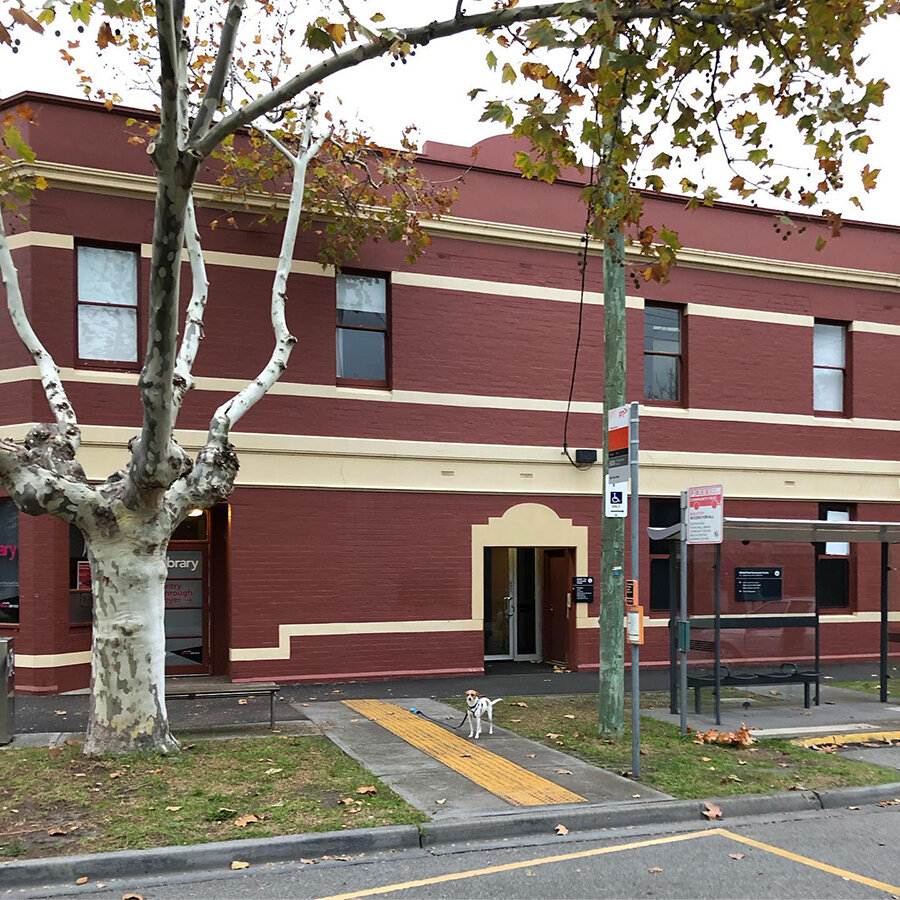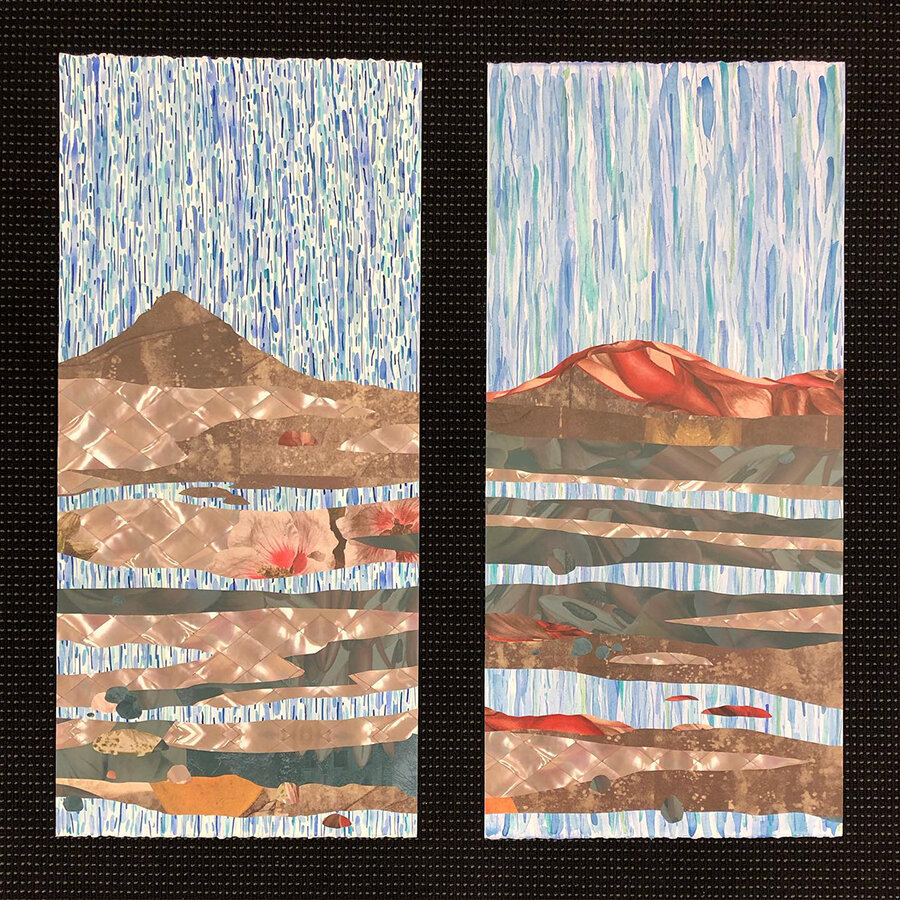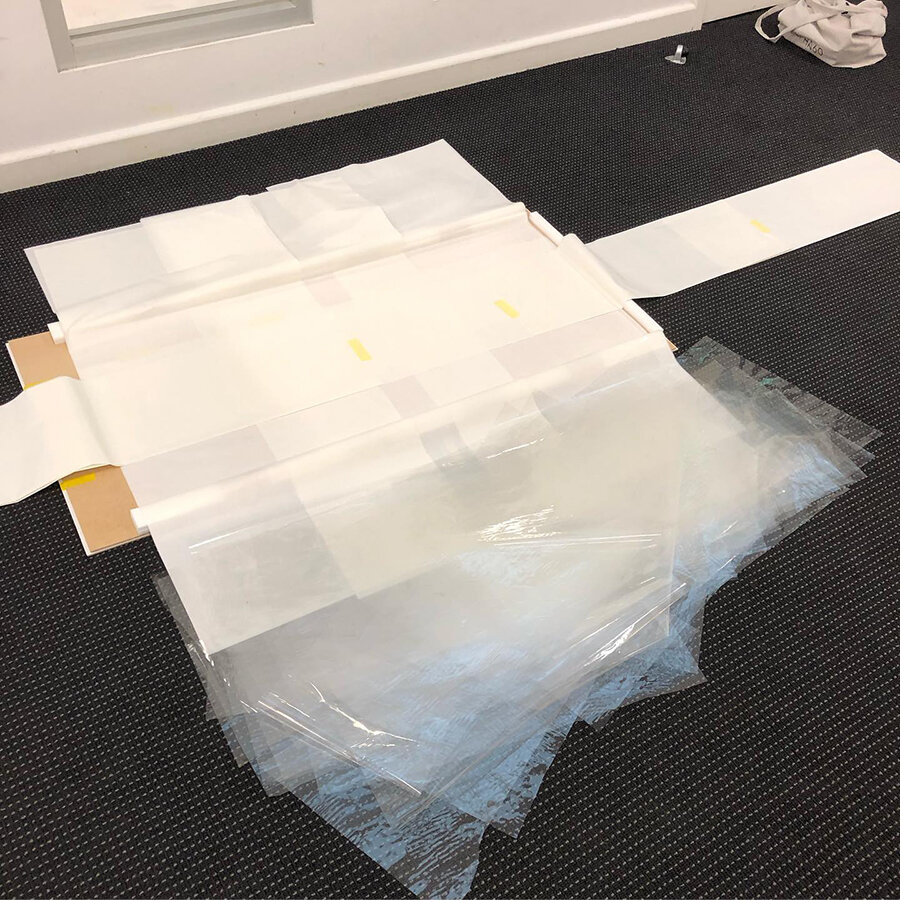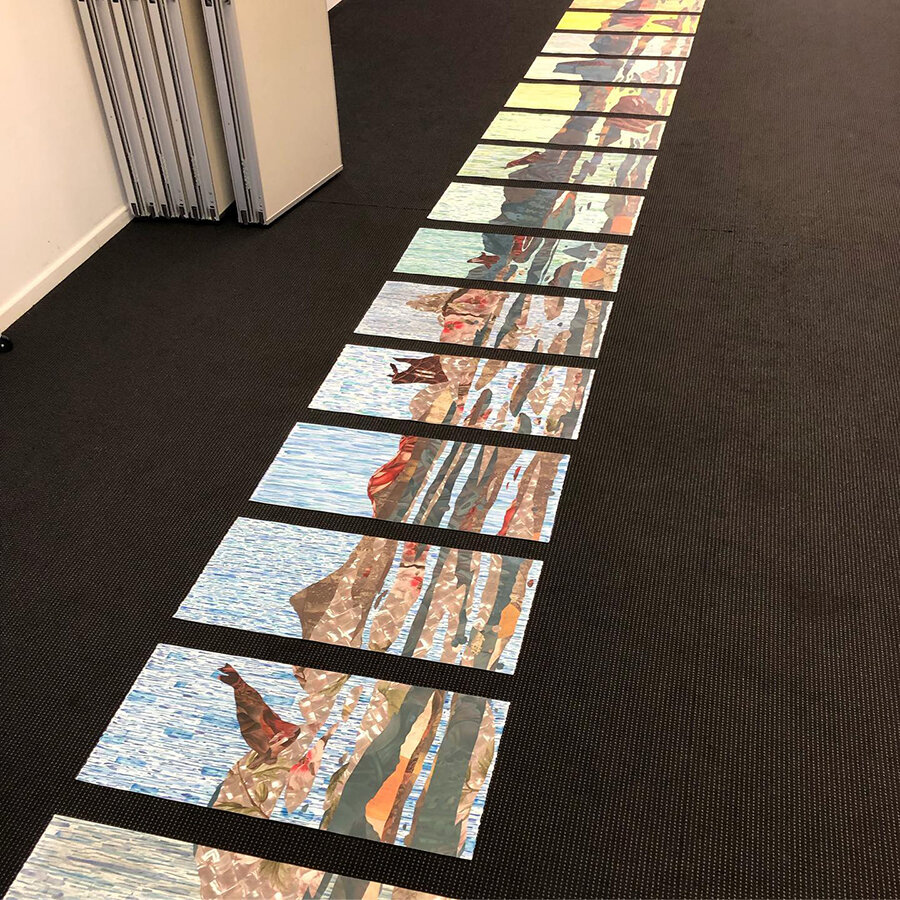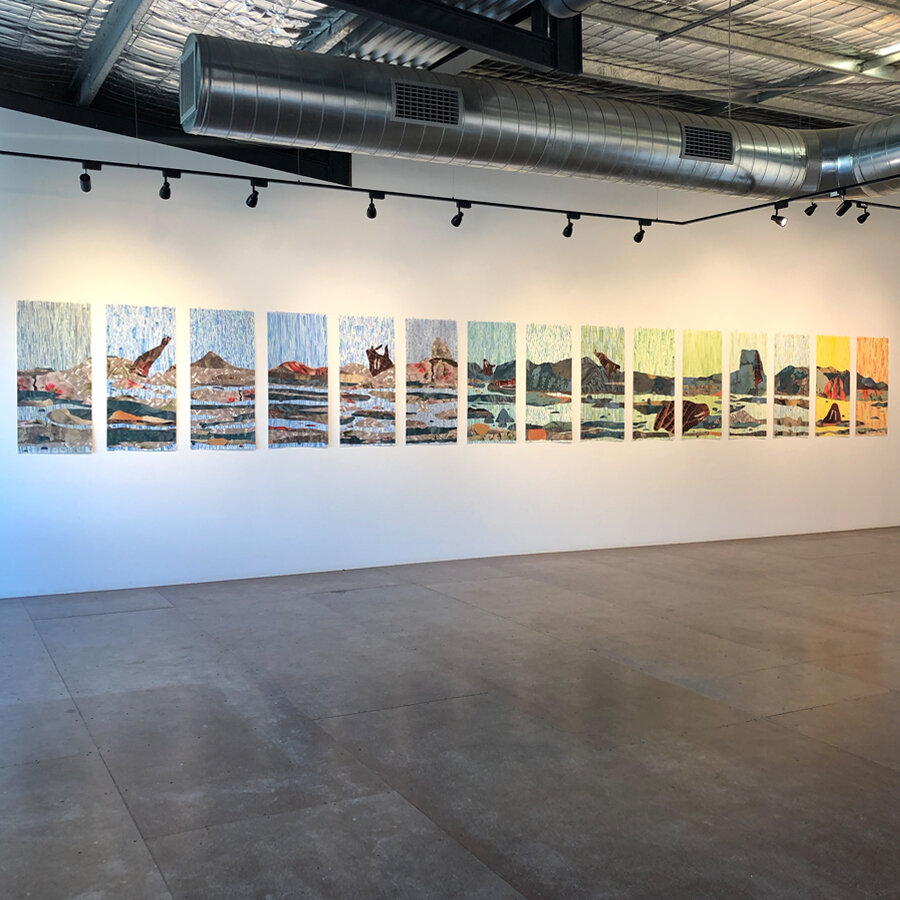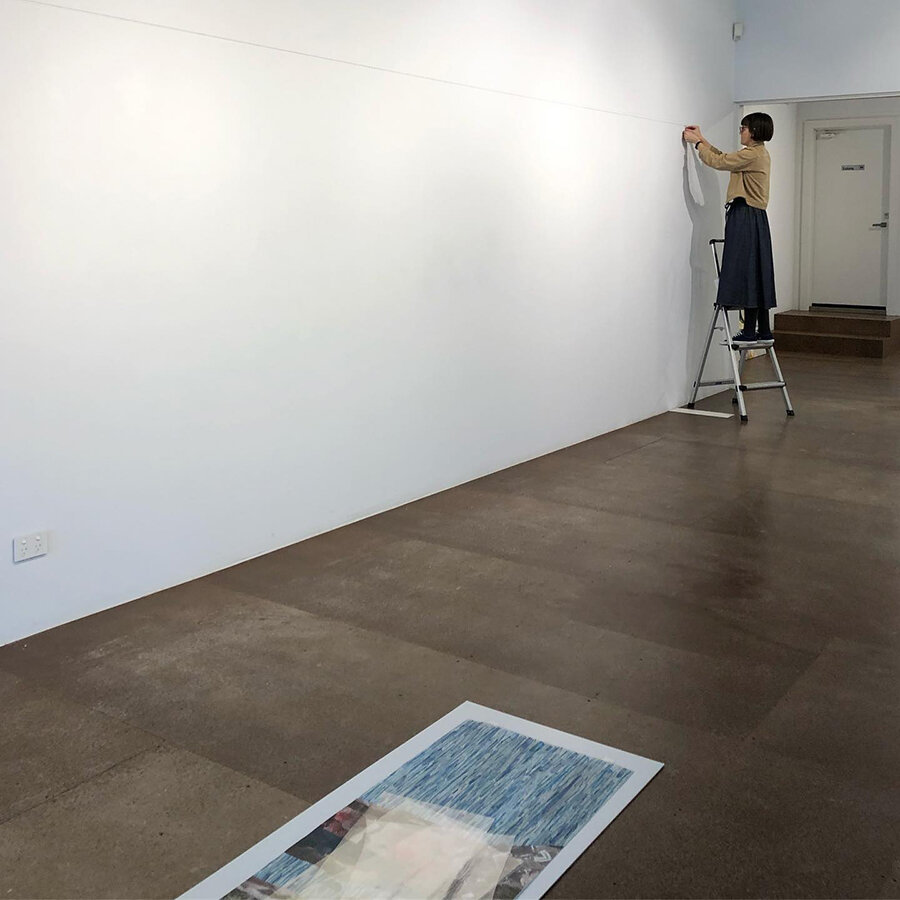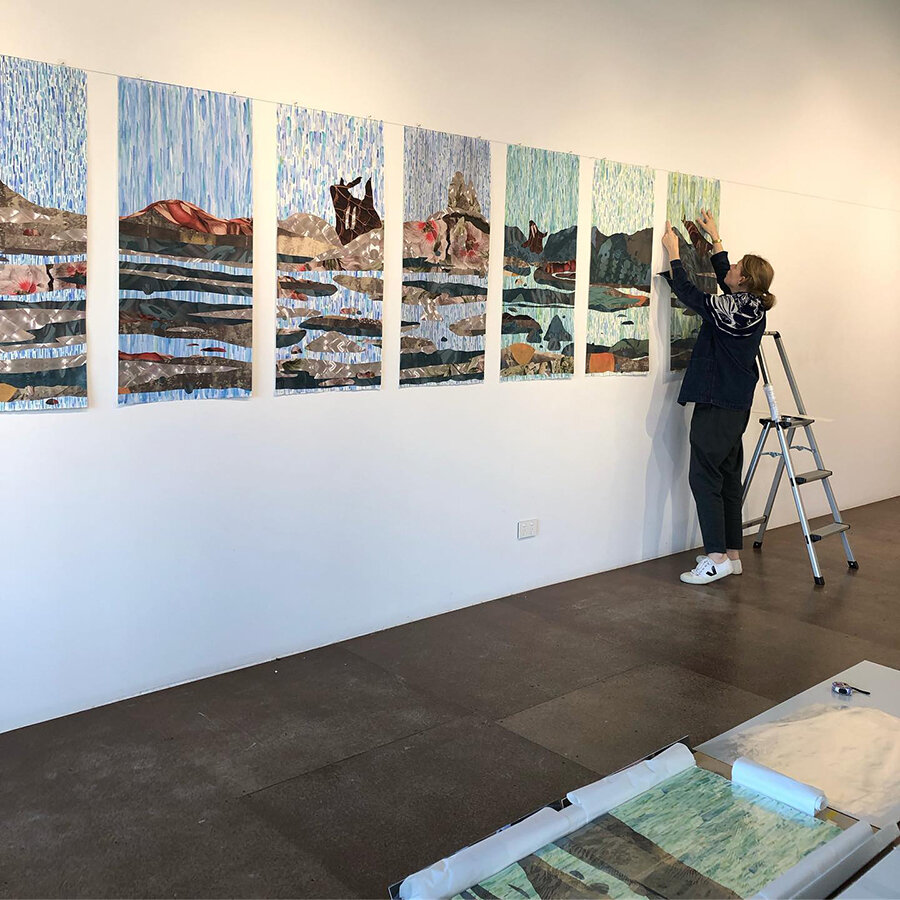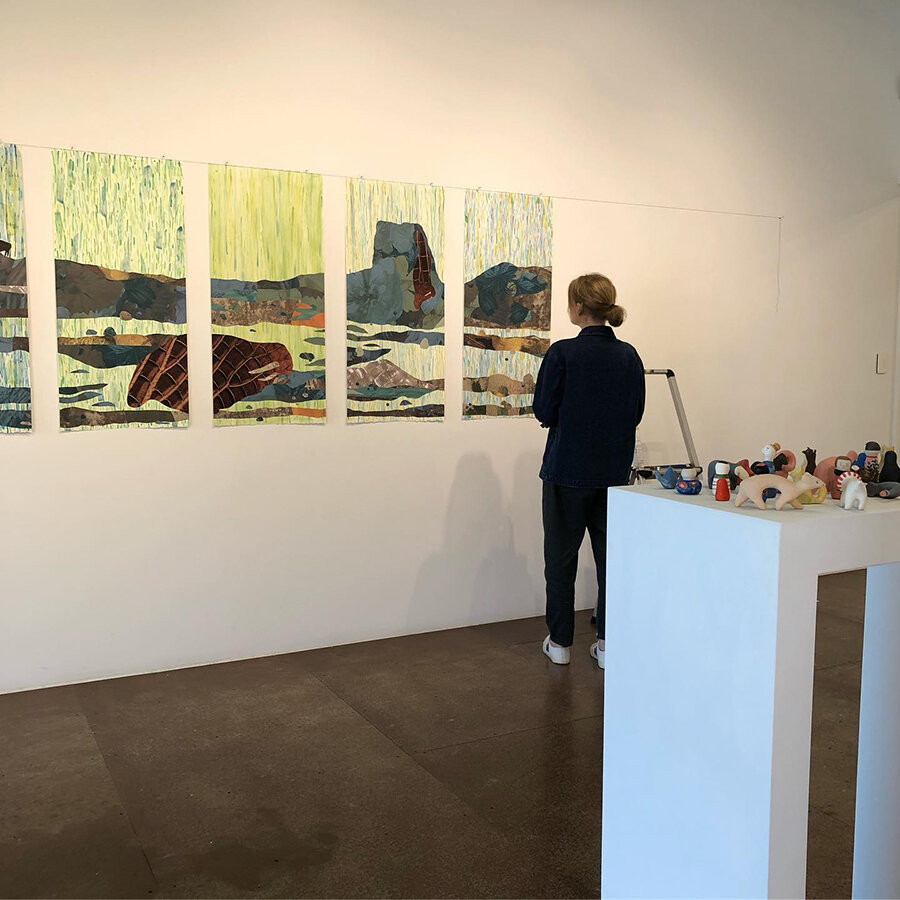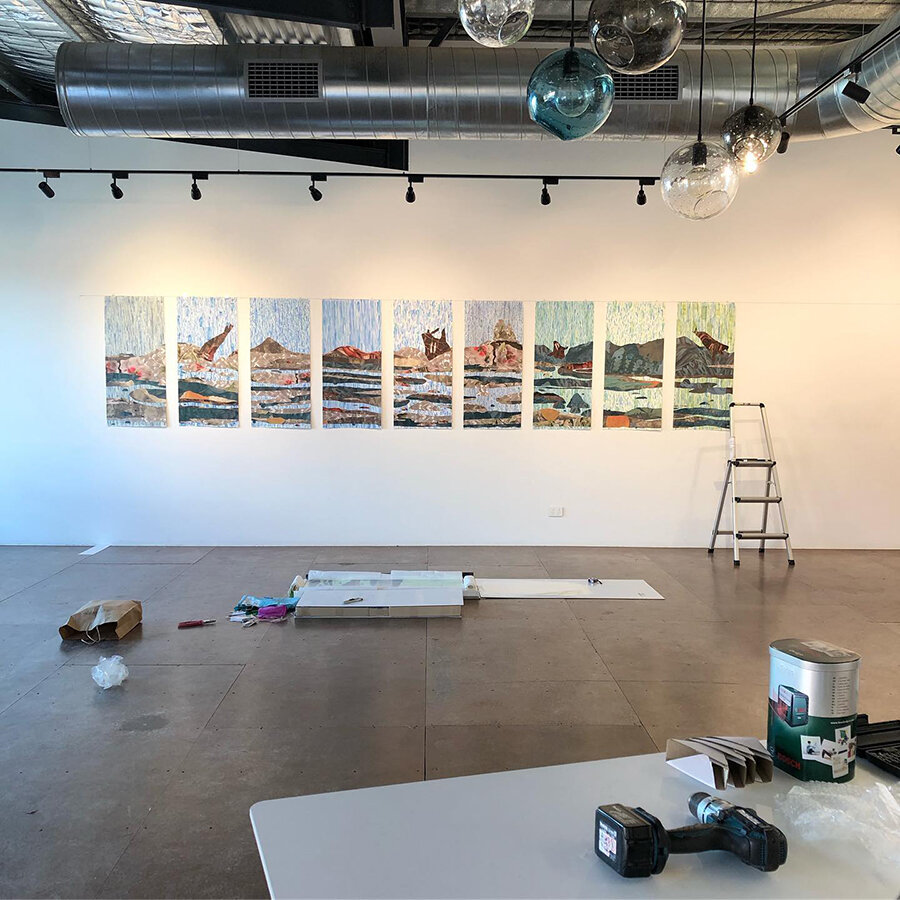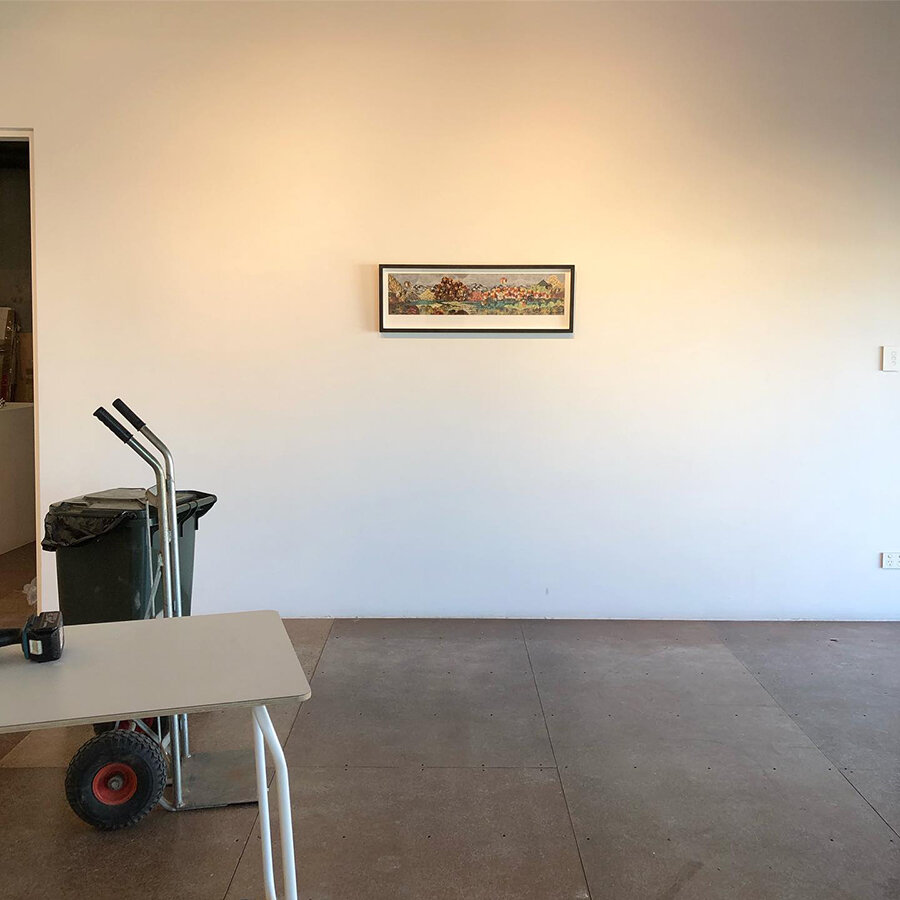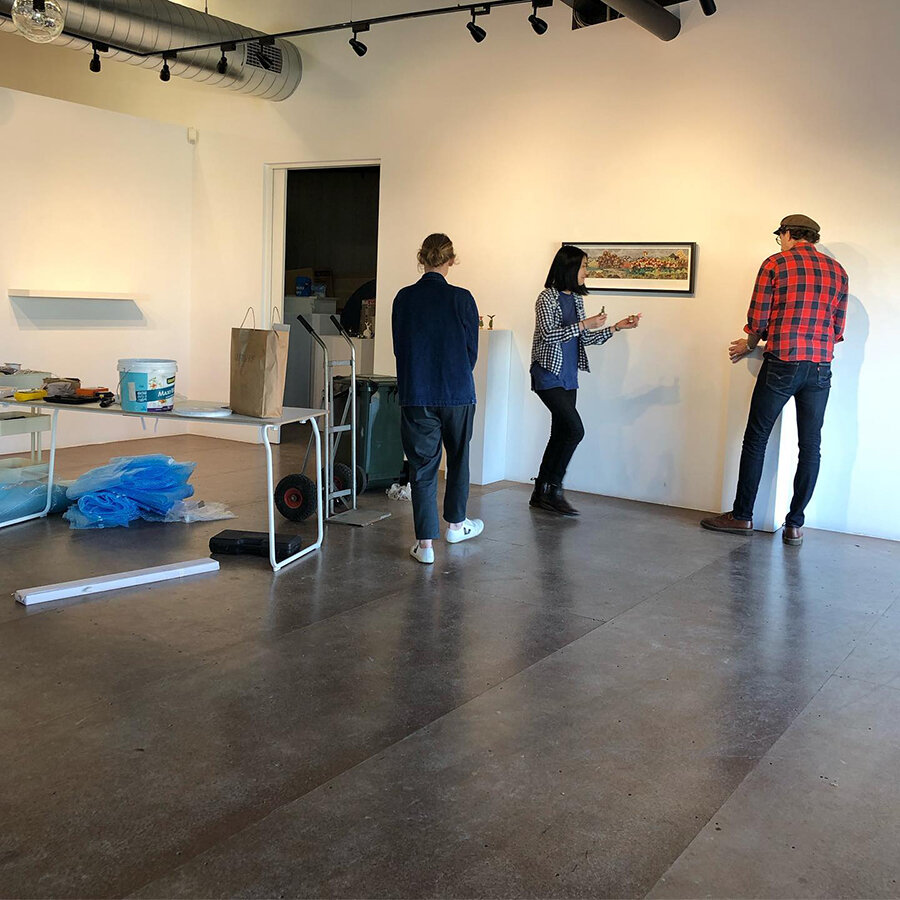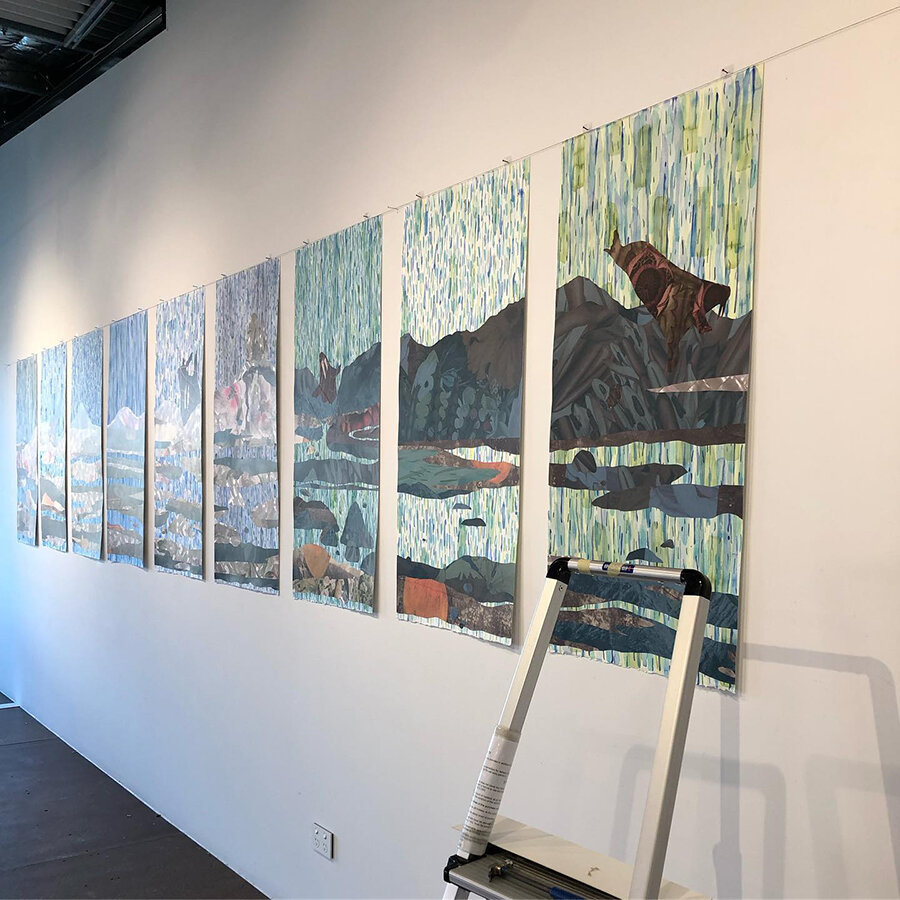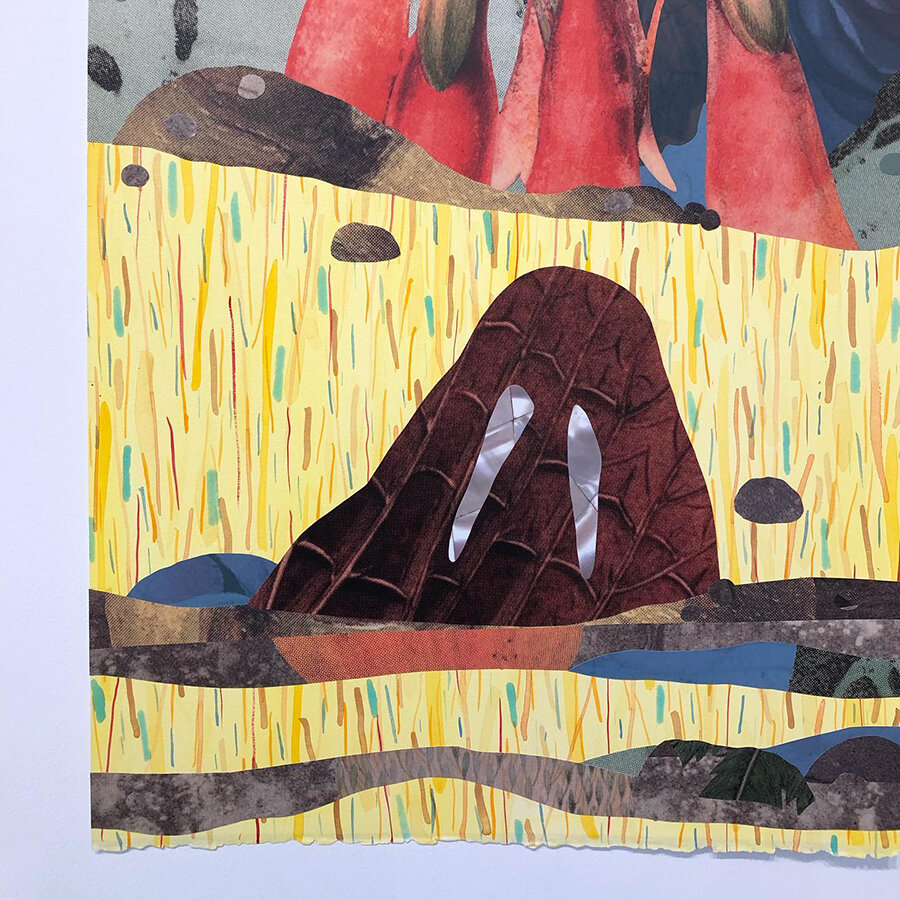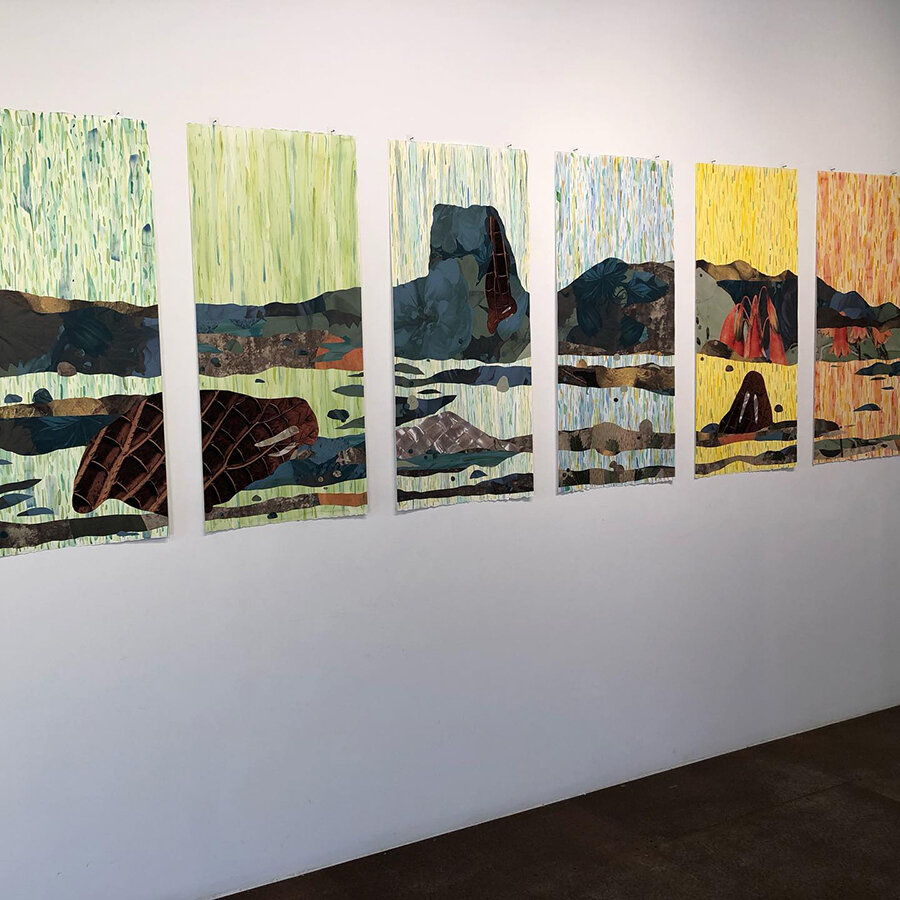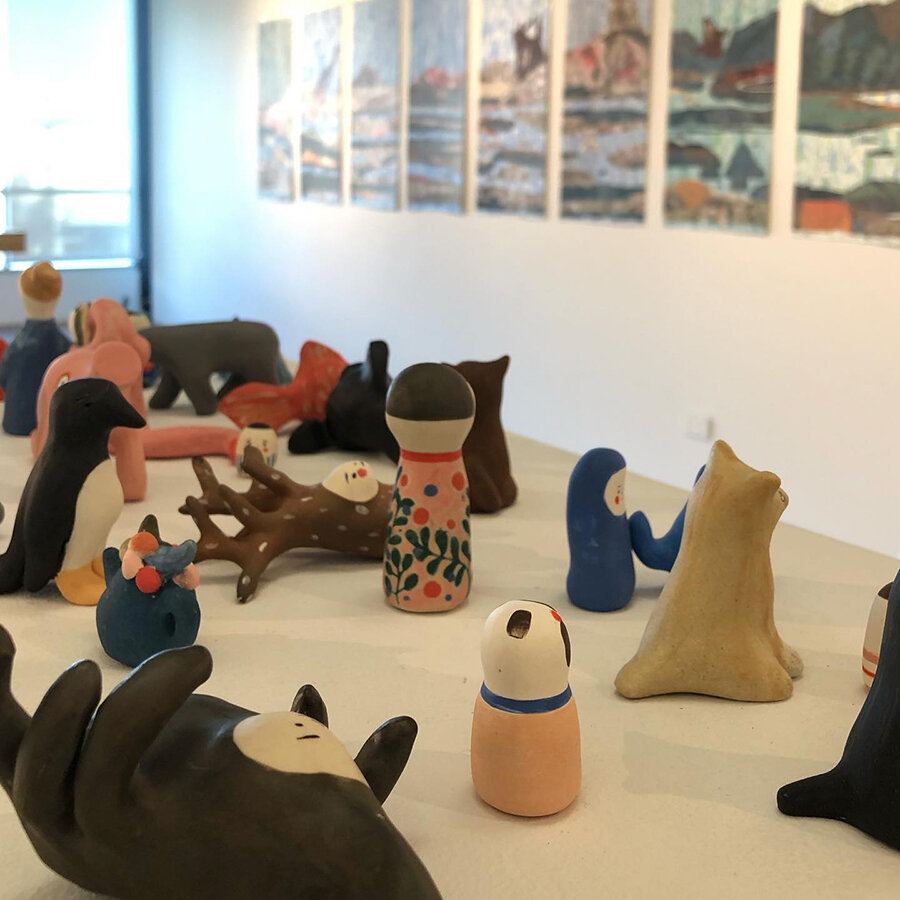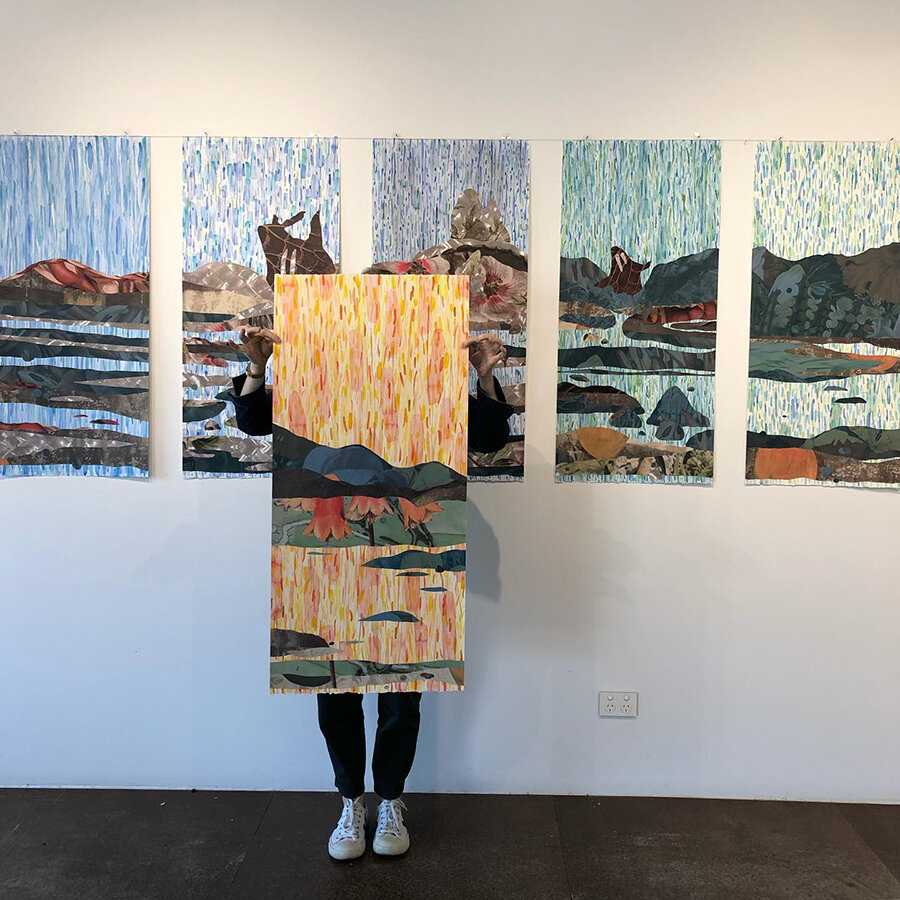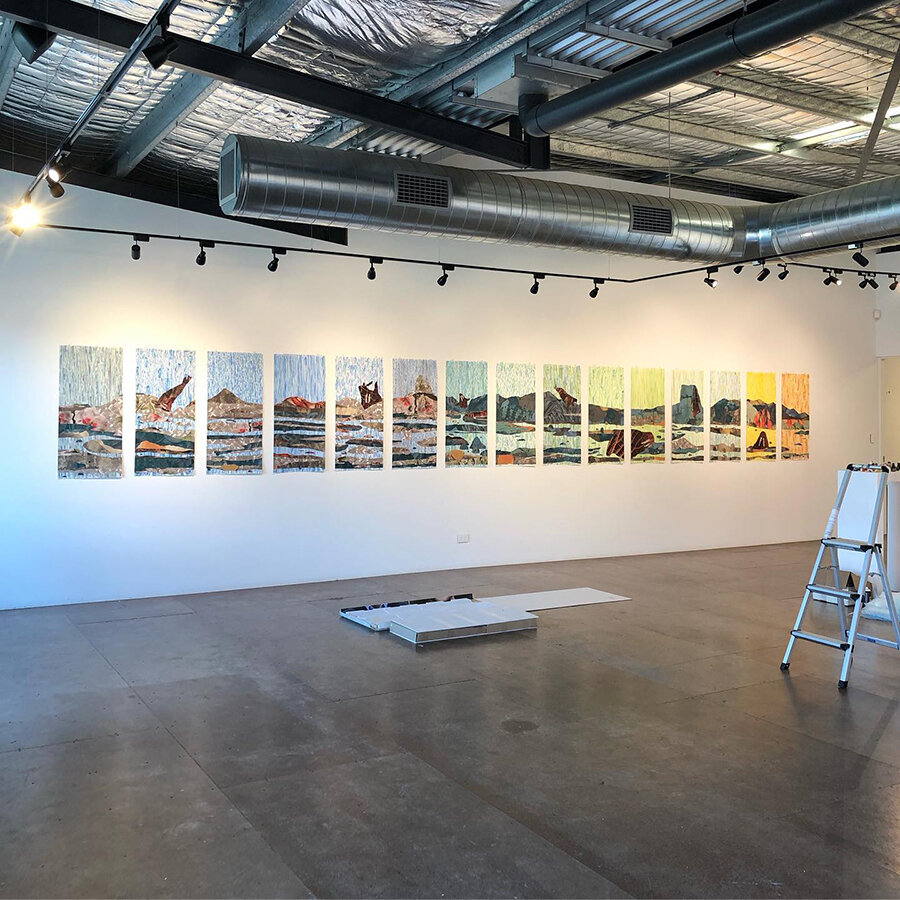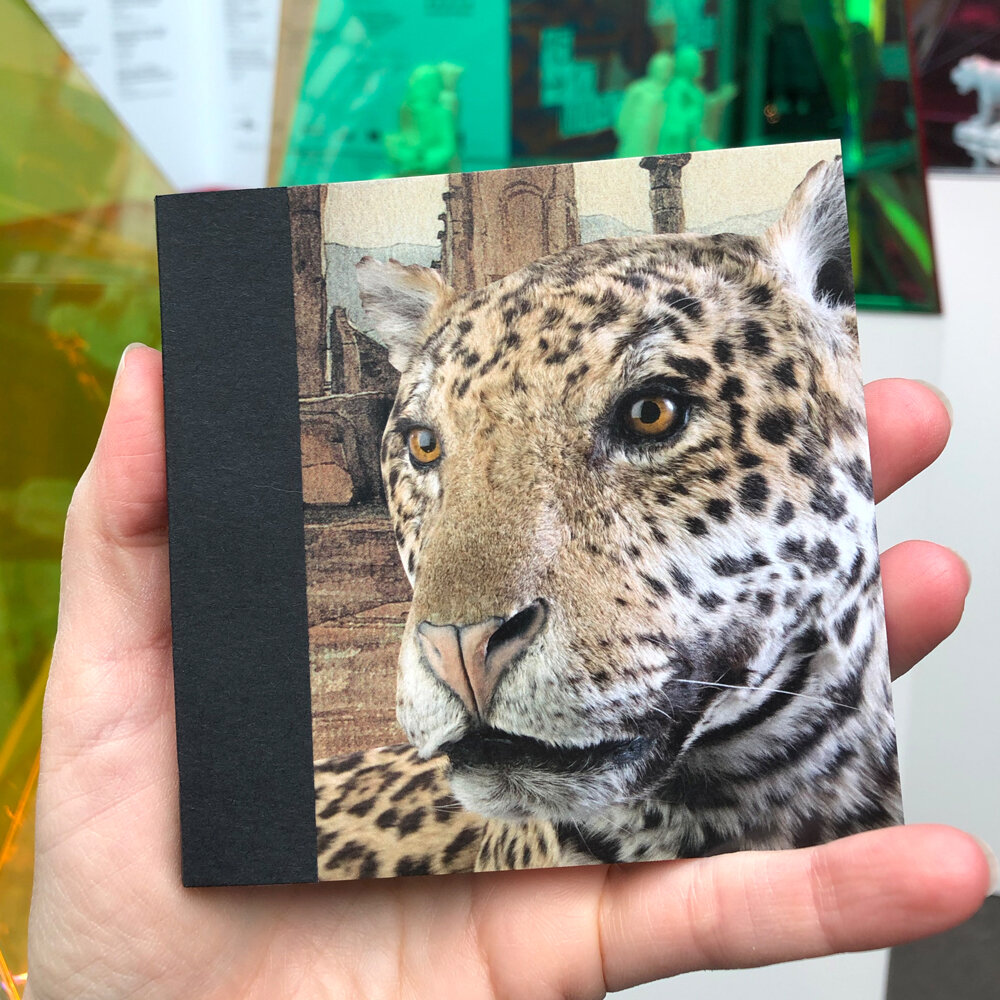IT CAME LIKE LIGHT OUT OF THE WALLS
Things evolve, it’s what they do. True to the word’s Latin origin, they roll.
Gracia Haby & Louise Jennison
It came like light out of the walls
2018–2019
Digital vinyl print and watercolour on Fabriano Artistico 300gsm traditional white hot-press paper
Alongside Kyoko Imazu’s In the Neighbourhood
West Gallery Thebarton
32 West Thebarton Road, Thebarton, South Australia
Thursday 13th of June – Sunday 21st of July, 2019
evolve | ɪˈvɒlv |
verb
1 develop gradually
• (with reference to an organism or biological feature) develop over successive generations as a result of natural selection: [no object] : Pink salmon are evolving in response to climate change in Auke Creek, Alaska, which is heating up .03 degrees Celsius (.054 degrees Fahrenheit) per year.[i]
origin
early 17th century (in the general sense ‘make more complex, develop’): from Latin evolvere, from e- (variant of ex-) ‘out of’ + volvere ‘to roll’.
It came like like our of the walls at West Gallery Thebarton
Gracia Haby & Louise Jennison
Things evolve, it’s what they do. True to the word’s Latin origin, they roll.
As such, our 15-metre wall collage, Ripples in the Open, exhibited at ArtSpace Realm, Victoria (2018–2019) in one ‘finished’ guise, has grown into It came like light out of the walls[ii], a series of collaged drawings for West Gallery Thebarton, South Australia. Unstuck from the wall, rolled, and kept, the landscape within Ripples in the Open has become a new work. We have cut into the salvaged pieces, reused and adapted elements to make use of what we had, changed previous reading in the process, and continued a pattern. Images are our narrative, and nothing is fixed.
As we worked, we thought about changes that are small and particular to us. And we thought about changes that are larger, and seemingly beyond our own control. Universal shifts, their very inevitability. That global pattern! Change — insert the common expression — is the only certainty.
The large collaged drawings we have created from the very fabric of Ripples in the Open are a continuation, an evolution of an idea for us, personally. We are organisms working to maintain our own ‘adaptedness’. And, in a broader sense, the animals within the landscape of our drawings signify that “animals can react to climate change in only three ways: They can move, adapt or die”.[iii]
With our planet on the verge of another major extinction event[iv], the question is “whether plants and animals can adapt quickly enough to outpace climate change. We often think of evolution as something that happens slowly, but that’s not always the case. If the selection pressures are strong enough, evolution can happen over mere decades”.[v]
We now have “several examples [of] where organisms have evolved in response to selection pressures associated with climate change, including changes in the timing of life history events and in the ability to tolerate abiotic and biotic stresses arising from climate change. There are concerns that the rates of environmental changes are too fast to allow many, especially large and long-lived, organisms to maintain adaptedness…. Hence, widespread maladaptation and extinctions are expected”.[vi]
We need to preserve marine and land-based ecosystems; increase the connection between natural areas to secure the migration routes that allow for species to travel to cooler zones, and enable the congregation of larger populations needed to support genetic diversity required for phenotypic plasticity and adaptive evolution. This is what we have shoehorned into our series It came like light out of the walls, our functioning (or not) ecosystem on the page.
That organisms are not static is our light (within our drawings).
“For the first time in our history, the stability of nature can no longer be taken for granted. All across our planet, crucial connections are being disrupted, the stability that we and all life relies upon is being lost. What we do in the next 20 years will determine the future for all life on Earth…. Earth’s most important habitats, and …. the life they still support …. must be preserved if we are to ensure a future where humans and nature can thrive.”
— Sir David Attenborough, Our Planet, https://www.ourplanet.com/en
Sources:
The effects of phenotypic plasticity and local adaption on forecasts of species range shifts under climate change
Fernando Valladares, Silvia Matesanz, François Guilhaumon, Miguel B. Araújo, Luis Balaguer, Marta Benito‐Garzón, Will Cornwell, Ernesto Gianoli, Mark van Kleunen, Daniel E. Naya, Adrienne B. Nicotra, Hendrik Poorter, and Miguel A. Zavala
Climate change drives microevolution in a wild bird
Patrik Karell, Kari Ahola, Teuvo Karstinen, Jari Valkama, and Jon E. Brommer
Evolution of a genetic polymorphism with climate change in a Mediterranean landscape
John Thompson, Anne Charpentier, Guillaume Bouguet, Faustine Charmasson, Stephanie Roset, Bruno Buatois, Philippe Vernet, and Pierre-Henri Gouyone
Behind the Scenes of Our Planet’s Walrus shoot: Scientist Anatoly Kochnev helped film dramatic scenes of mass gatherings of walrus
WWF International, YouTube video published on 10th April, 2019
Notes:
[i] “The salmon are now migrating out of the creek earlier, and scientists have shown that that change is genetic. Wild thyme (Thymus vulgaris) in France has evolved in response to fewer extreme cold events since the 1970s, producing more pungent oils to deter herbivores (at the cost of becoming less cold-hardy). Tawny owls (Strix aluco) can be light gray or brown, depending on the genes they inherit from their parents. As snow cover in Finland has declined since the late 1970s, the light gray owls, best camouflaged during snow, no longer have much of an advantage, and scientists have shown that brown owls are now much more common.”
Emma Marris, ‘How a Few Species Are Hacking Climate Change: Animals can be surprisingly adaptable — but can they change quickly enough?’, 6th May, 2014, National Geographic, https://news.nationalgeographic.com/news/2014/05/140506-climate-change-adaptation-evolution-coral-science-butterflies/, accessed 2nd April, 2019.
[ii] The title of our exhibition is a line from Pinpoint, a poem by Laura Ulewicz, https://www.poetryfoundation.org/articles/149536/in-a-foreign-land, accessed 28th March, 2019.
[iii] Renee Cho, ‘What Helps Animals Adapt (or Not) to Climate Change?’, State of the Planet, Earth Institute, Columbia University, https://blogs.ei.columbia.edu/2018/03/30/helps-animals-adapt-not-climate-change/, accessed 10th April, 2019.
[iv] Tony Hiss, ‘Can the World Really Set Aside Half of the Planet for Wildlife?: The eminent evolutionary biologist E.O. Wilson has an audacious vision for saving Earth from a cataclysmic extinction event’, Smithsonian Magazine, September 2014, https://www.smithsonianmag.com/science-nature/can-world-really-set-aside-half-planet-wildlife-180952379/, accessed 2nd April, 2019.
[v] Helen Thompson, ‘Ten Species That Are Evolving Due to the Changing Climate: From tropical corals to tawny owls, some species are already being pushed to evolve — but adaptation doesn’t guarantee survival’, 24th October, 2014, Smithsonian.com, https://www.smithsonianmag.com/science-nature/ten-species-are-evolving-due-changing-climate-180953133/#vW0EYl6zpd8GT4uT.99, accessed 13th April, 2019.
[vi] Juha Merilä and Ary A. Hoffmann, ‘Evolutionary Impacts of Climate Change’, Environmental Science, August 2016, http://oxfordre.com/environmentalscience/view/10.1093/acrefore/9780199389414.001.0001/acrefore-9780199389414-e-136, accessed 2nd April, 2019.
